Meryl Streep visits campus to receive award
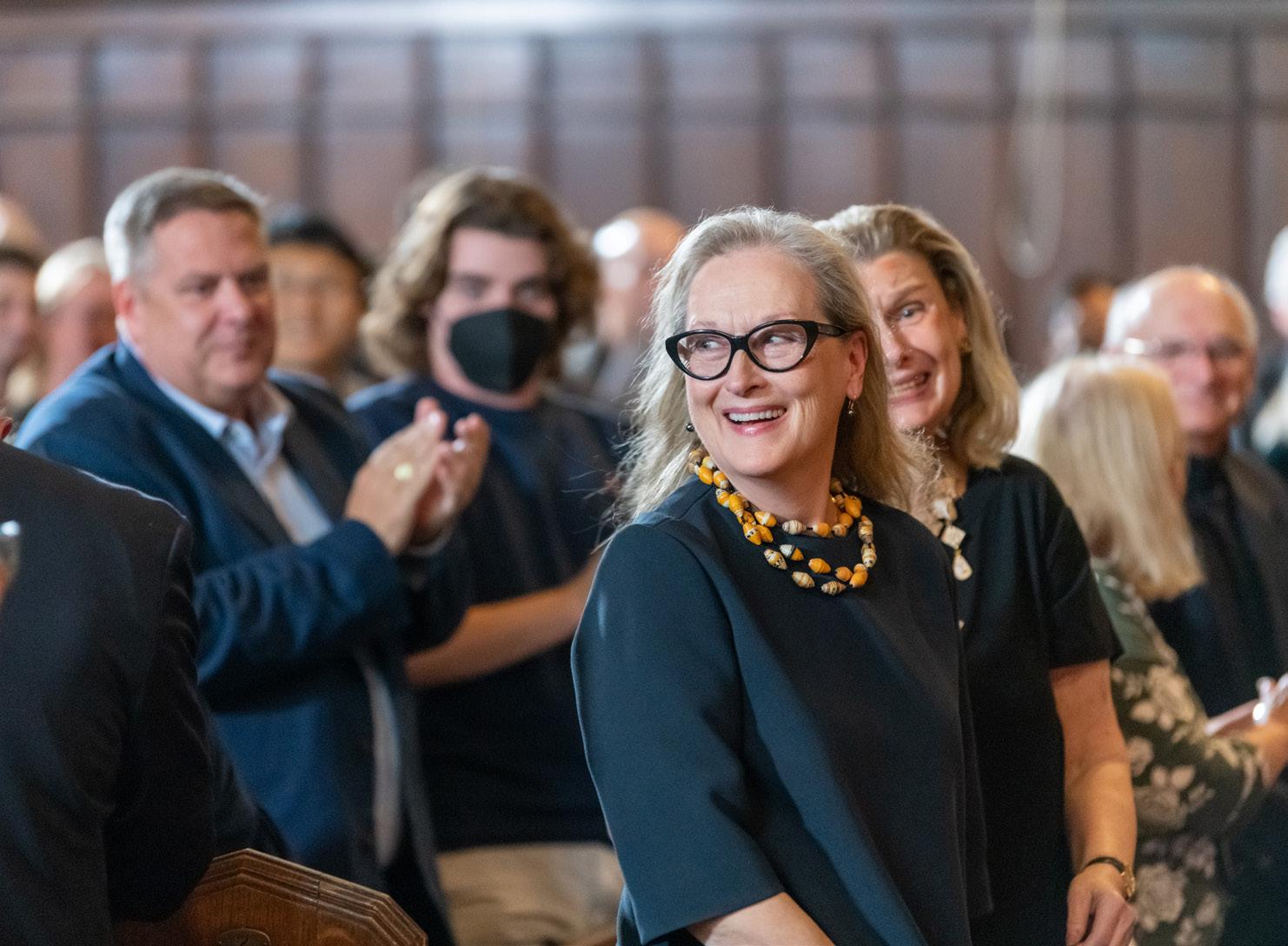 Leila Raines Editor-in-Chief
Leila Raines Editor-in-Chief
Students, faculty and other members of the Vassar community lined up outside the Vassar Chapel on Thursday, Oct. 13, as rain trickled down from a gray sky. For almost a month leading up to that day, the Vassar community had been eagerly antici pating the arrival of esteemed actress Meryl Streep ’71, P’08, ’13, a ray of sunshine on an otherwise gloomy day.
Streep had originally planned to visit the Vassar campus to receive the AAVC Distin guished Achievement Award back in Spring 2022. However, the College had to postpone the ceremony when a case of pneumonia prevented her from attending. This past September, the College finally announced the new date for the ceremony, inviting for mer ticket holders to reclaim their spots and later opening up remaining tickets to the rest of the community via lottery.
And on that Thursday, the time had fi
nally come: a glass podium stood on a stage at the front of the Chapel. On the screen displayed to the right of the stage, a slide show of pictures started to flicker by, show ing stills from some of Streep’s most iconic movies, as well as photos highlighting some of her previous awards, including her nu merous Oscars and the Presidential Medal of Freedom that she received from former President Barack Obama. At the beginning of the slideshow, audience members got a glimpse of Streep’s time at Vassar, with the inclusion of photographs from some of the college theatrical productions in which she performed.
“Sophie’s Choice.” “The Devil Wears Pra da.” “Mamma Mia!” “Julie & Julia.” Claps, shouts and whoops greeted some of her well-known films, building up the excite ment in the minutes leading up to Streep’s arrival. Shortly before 4 p.m., heads among the crowd bobbed up, and soon the entire space exploded in applause as Streep herself stepped into the Chapel.
Everyone rose to their feet, heads craning over the crowd to get a glimpse of Streep as she entered the building from the rear, moving to her seat.
The ceremony commenced with a song from the Vassar College Choir and Women’s Chorus; the voices of the student-musicians weaved together in a touching rendition of “Afternoon on a Hill,” arranged by Eric Bar num, who pulled the lyrics from the poem
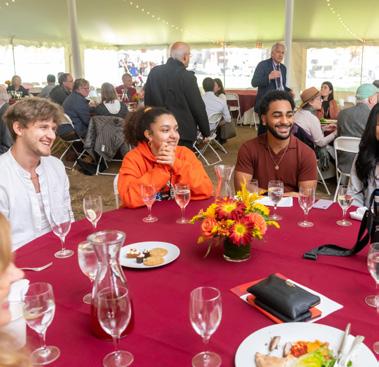
Brewers raise funds for sports
Nick Villamil ColumnistOn Oct. 6, The Miscellany News reported on the Vassar Athletics Day of Giving making its return after a two-year hiatus because of COVID-19. As our paper was released across campus that morning, the fundraiser went live. The campaign ran for 27 hours until noon on Oct. 7 and set a new Athletics Day of Giving record with a total of $495,170 raised.
The campaign’s focus on Athletic Depart ment-wide unity paid dividends, as all 29 teams easily surpassed the donor goals set by the department and the donation goals set by teams individually.
No team reached its donor goal by less than 111 percent. Multiple teams cleared their donor goals by over 200 percent, and men’s lacrosse reached an outstanding 445 percent. These donor numbers combine to a total of 3,437 department wide donors, good for almost double the 2,000-donor goal set by the campaign.
As a result of the 2,000-donor threshold being met, President Elizabeth Bradley and her husband John Bradley made a $10,000 donation to the department-wide Brewer Fund, an incentive they committed to prior to the campaign’s start, per an email from
Writer recommends fall activities
 Colin Dalggard Guest Columnist
Colin Dalggard Guest Columnist
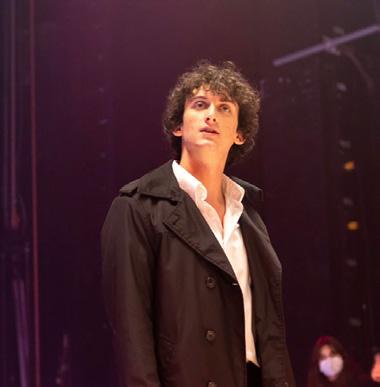
As a first-year student who came to Vas sar from Pittsburgh, I am no stranger to the four seasons. In fact, the changes in season are vital to me; I’m always looking forward to the leaves changing colors, the first snowfall, beautiful flowers blooming and the nostalgic music of an ice cream truck. When I decided to come to upstate New York for college, I didn’t embrace the fact that I would continue to experience the luxury of the four seasons until now.
Though I love all of the seasons, fall is my favorite. When I arrived in Poughkeep sie and began to tell everyone how excited I was to experience autumn on our beautiful campus, I learned that not everyone has ex perienced the season in all its red, gold and amber glory. What?! I can now recognize my naivete, but I feel this nagging pressure to enlighten all those who have yet to expe rience a true Christian Girl Autumn. Well, here it is: your guide to fall from an absolute fall-fanatic.
But, I must proceed with caution: Can dles are my favorite way to embrace the fall season. Every year, I’ve pulled out my chai-, pumpkin- and apple-scented candles. But since that’s not possible in the dorms, here are some other ways to embrace the fall sea son.
Wear flannels and other Christian Girl Autumn wardrobe staples
Nothing says fall fashion like a flannel.. No matter what flannel you are wearing— buttoned, unbuttoned; tied, untied; col orless, colorful—understand the immense impact you are making in terms of em bracing Christian Girl Autumn. That’s not all, though. Scarves, jeans, boots, sweaters and hats also fit the theme. When you wear your fall-est fit, you should go ahead and snap some pictures. Who knows, maybe you will be the next big fall influencer.
Attend fall events
Be on the lookout for events run by house teams, student organizations and academ ic departments. Fall Fest was an awesome experience during families’ weekend, with students gathering outside to spend time with friends and family. Oktoberfest really drove the fall vibes home with apple cider, hay rides and fun face painting. Halloweek end also promises some exciting autumn ac tivities, so take advantage of what you can!
Relax outside and embrace the beau tiful leaves
Do you have a blanket or a hammock? If so, now is the perfect time to use it. Find a comfortable spot and decompress! Taking small moments for yourself, especially somewhere as stressful as Vassar, is crucial
Voces8 dazzles in concert
Madi Donat Humor EditorOn Oct. 9 at 8 p.m., over 300 guests—stu dents, faculty and community mem bers alike—had the immense privilege of experiencing a performance by what is no doubt one of the finest chamber vocal en sembles of the 21st century, and dare I say one of the best vocal groups of all time. VO CES8, a British ensemble consisting of eight members, performed the first concert of its ongoing U.S. tour right here at Vassar, ti tled “Underneath the Stars.” It was, without question, an unbelievable experience.
Prior to the concert, the group hosted a workshop on the evening of Oct. 8 with Vassar and community choir members, emphasizing choral performance practice and providing fun rhythmic and techni cal exercises. On the following morning of Oct. 9, the group conducted three separate workshops on ensemble singing, composi tion and music careers and brand-building. Then later that evening, the group show cased a two-hour program of songs focusing on spiritual and physical regeneration. The program consisted of classical and jazz com positions from across Europe and the United States, spanning from the 16th century to the present day.
The concert began with a piece by William Byrd from the group’s native England. Even
from this first piece, it was clear that this group’s professionalism, quality and sheer talent were unlike anything I had ever heard. European music from this time is often writ ten in a style called polyphony, where multi ple independent melodic lines weave in and out of each other. This work is hard enough for a composer, but the hard task of a per former is to make each line stand out while also blending within one’s own part, all the while emphasizing the important lines of text in each part and making them clear. The group blended seamlessly with each other throughout, and the text was incredi bly clear from the onset.
The following set saw a performance of a motet by the German early-Baroque com poser Heinrich Schütz entitled “Selig sind die Toten” (“Blessed are the dead”). This sec tion of the concert focused on death before regeneration, and Schütz emphasizes the blessing in the text with more deftly crafted polyphonic lines. This piece specifically has sections of movement contrasted with mo ments in which multiple parts move togeth er, a metaphor for the stillness or rest of the dead. The group navigated these contrasts beautifully, allowing each to shine in its own way.
The group also showcased many newer pieces, including a piece written by Paul
See Voces8 on page 6Learn
Guest Columnist Sophia Wood reviews one of the first senior
productions to hit
stage this
Check out the photographs and stories that stu dents have shared from their adven tures over October Break.
THE MISCELLANY NEWS
EDITOR-IN-CHIEF
MANAGING EDITOR
SENIOR EDITOR
CONTRIBUTING EDITORS
NEWS EDITORS
ARTS EDITOR
Leila Raines Nina Ajemian Monika Sweeney
Janet Song Annabelle Wang
EDITOR
OPINIONS EDITOR
HUMOR EDITOR
ASSISTANT HUMOR EDITOR
SPORTS EDITOR
SOCIAL MEDIA EDITOR
DESIGN EDITOR
EDITORS
GRAPHICS EDITOR GRAPHIC ARTISTS
VIDEO PRODUCTION MANAGER

BUSINESS MANAGER DESIGN STAFF REPORTERS, COLUMNISTS
Jacques Abou-Rizk Will Sorge Ganesh Pillai Kai Speirs
Sufana Noorwez
Madi Donat
Nicholas Tillinghast
Doug Cobb Tracy Cen
Maryam Bacchus
Jacqueline Gill
Sashinka Poor Karen Mogami Seowan Back Tori Kim Ian Herz
Rohan Dutta Chloe Gjoka Phoebe DiLeo Ruby Funfrock Carly D’Antonio Arlene Chen Katie Gebbia Anna Kozloski Gwen Ma
COPY STAFF
Jyotsna Naidu Sam Patz Danielle Recco Naima Saini Anna Terry Nick Villamil Anica Acuna Simon Goldsmith Glenna Gomez Caris Lee Bryn Marling
Claire Miller
Melissa Roybal
Hadley Sparks Emma San Filippo
Meera Shroff Mia Stein
Danny White
CORRECTION
Meryl Streep accepts AAVC Distinguished Achievement Award
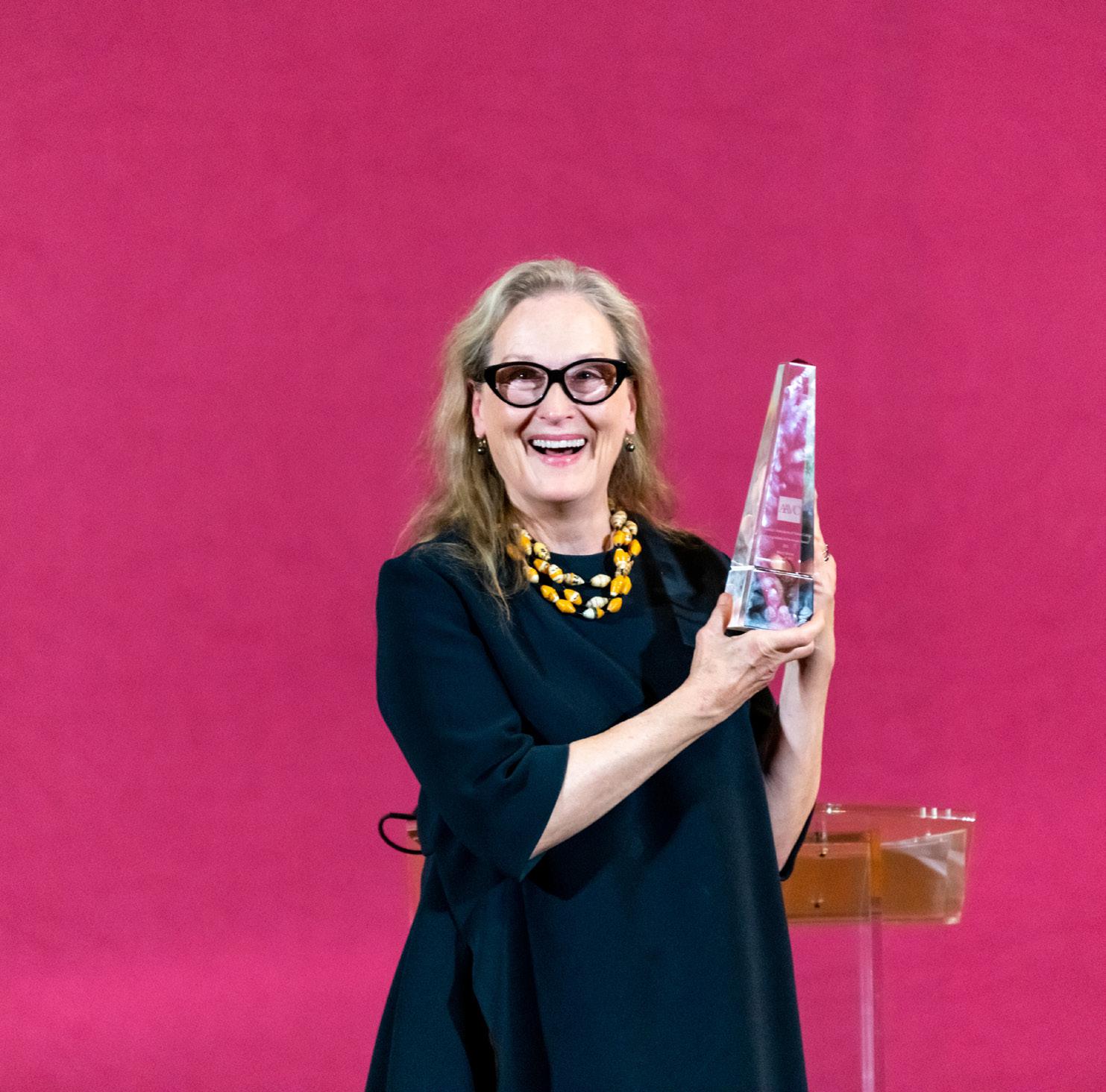
of the same name by Edna St. Vincent Mil lay, Class of 1917.
AAVC President Monica Vachher ’77 provided a short welcome for the audience before passing the stage to President of the College Elizabeth Bradley. Bradley high lighted Streep’s continuing engagement with the Vassar community, even as she moved forward to pursue a prolific acting career: her 10 years as a member of the Vassar Board of Trustees, her participation in several on-campus events and her dona tions to the College, which have resulted in the construction of various spaces on cam pus, such as the Meryl Streep Earth and Environmental Sciences Lab in the Bridge for Laboratory Sciences and the Streep Stu dio in the Vogelstein Center for Drama and Film.
Bradley concluded her speech with a quote from Streep’s Commencement ad dress to the Class of 1983: “The choice be tween the devil and the dream comes up every day in different little disguises … If you can live with the devil, Vassar hasn’t sunk her teeth into your leg the way she did mine. But that conscience, that conscious ness of quality and the need to demand it, can galvanize your energies, not just in your work, but in a rigorous exercise of the mind and heart in every aspect of your life … What you can take away from Vassar is a taste for excellence that needn’t diminish.”
Vachher afterwards returned to the stage to describe the AAVC Distinguished
gret, Meryl, is that, as your professor, I nev er managed to make you appreciate Ibsen.” Streep carried Sprinchorn’s book with her for the rest of the evening.
Vachher echoed these sentiments that Sprinchorn wrote about in his letter, em
gave her remarks.
“One value of a Vassar education is that it kind of dooms you to a life of awareness,” Streep said in her speech, eliciting a wave of laughter. “Once you know how to go to the source, once you know how to find out the facts and credit them around a certain prob lem, you are called on by your conscience to find solutions and act on them. The Vassar Conscience…it rings a bell in your head; it sounds a call to action in your heart.”
Streep devoted a portion of her time on stage to speak about her previous work with the environmental group Mothers & Others and her fight against the harmful effects of dangerous pesticides. She connected this ac tivism to the current environmental crisis and the looming threat of climate change. She posed an overarching question to the audience: “How do we not lose heart?”
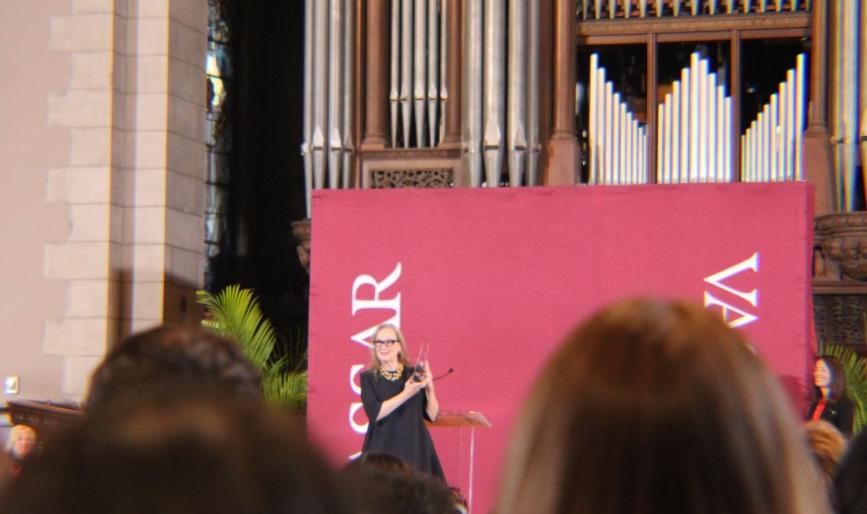
largely unexpectedly, came to experience. I was not prepping to be in movies…that was maybe the last thing I ever would’ve imag ined for myself.”
Streep further reminisced on her time at Vassar and the memories that she had from those influential four years of her life. “[E] very time I go through the Main Gate, I can summon up the sense memory of the first time I drove up from New Jersey with my parents and my stuff and they dropped me off at Davison and drove away,” Streep recalled. “And I was in this beautiful, im pressive place that placed beautiful big ex pectations on me. And I was determined to live up to the legacy of the many formidable women that preceded me there.”
Achievement Award. She detailed the qual ifications for receiving such an award, say ing, “While demonstrating exceptional tal ent, application, creativity and skill within a career, this individual must at the same time exemplify the ideals of a liberal arts education, and have used her or his position of visibility, power or leadership to better the human community and serve the wider goals of society.”
To give members of the audience a sense of Streep’s time at Vassar, Professor Emer ita of Drama Gabrielle Cody took the stage to read a letter from one of Streep’s former mentors, Professor Emeritus of Drama, Evert Sprinchorn, who passed away over the summer. In the letter, Sprinchorn cap tured the essence of Streep’s presence on campus and her work in the Department of Drama, having observed her talents first hand when she roamed Vassar as a student. Reminiscing on a scene in which Streep flourished, Sprinchorn wrote, addressing Streep directly in his letter, “You were tech nically perfect, but also an actress with such a depth of soul. You were not a student. You were an artist.”
Cody presented a copy of the book “Ib sen’s Kingdom: The Man and His Works” to Streep as a gift from Sprinchorn, who earlier mentioned in his letter, “My only re
phasizing the work that Streep has achieved in her career and in her films. “Her roles in film, on stage and on television have tackled critical issues, they have inspired us, they have made us laugh—and cry—and they have become a part of our cultural heritage,” Vachher expressed. “I know we each have our personal favorites, and if we just close our eyes, we can be immediately transport ed to one of Meryl’s dazzling characters.”
But Streep’s work and contributions ex tend far beyond the film industry. Vachher and Bradley both emphasized Streep’s hu manitarian work as well, particularly her commitment to environmental activism, women’s rights and advocacy for social change.
“Meryl Streep has reached the highest level in her field, demonstrating exception al talent, application, creativity and skill,” Vachher said. “She has also exemplified, and continues to exemplify, the ideals of a liberal arts education, and she certainly has used her position of visibility, power and leadership to better the human community and serve the wider goals of society.”
With that said, Vachher, alongside Chair of the Alumnae/i Recognition Committee Amy Pullman ’71, officially bestowed the award to Streep, who finally took to the stage, in tears after Sprinchorn’s letter, and
In a separate email correspondence with The Miscellany News, Streep reflected on the meaning of achievement to her and the im pact that Vassar had on shaping her future. “[W]hile I was here, I was definitely not aiming at the life and career that I later, and
In the words of Streep herself, “Achieve ment is measured daily in deficits, when your head hits the pillow and you think of everything you didn’t achieve. You are nev er finished ‘til you can’t draw breath.” With out a doubt, Streep will continue to inspire the present and future generations of Vassar students to continue striving for achieve ment.
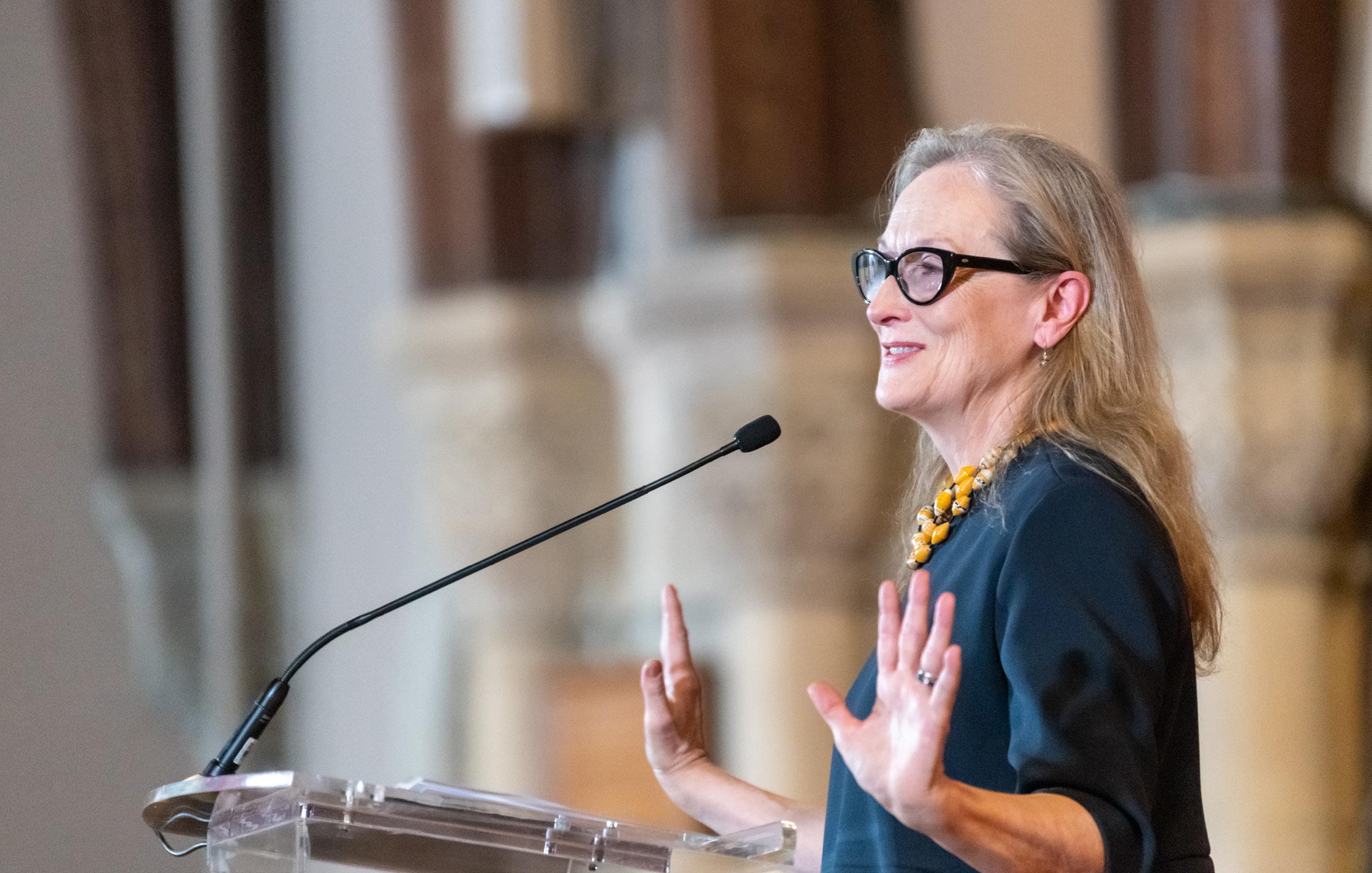
Board of Trustees dinners garner mixed reactions from students
In the week before October Break, the Board of Trustees held three dinners with Vassar students from Noyes, Cushing and Raymond Houses in an effort to initiate a relationship between Vassar students and the Board, ac cording to Special Assistant to the President and Secretary of the Board of Trustees Wesley Dixon.
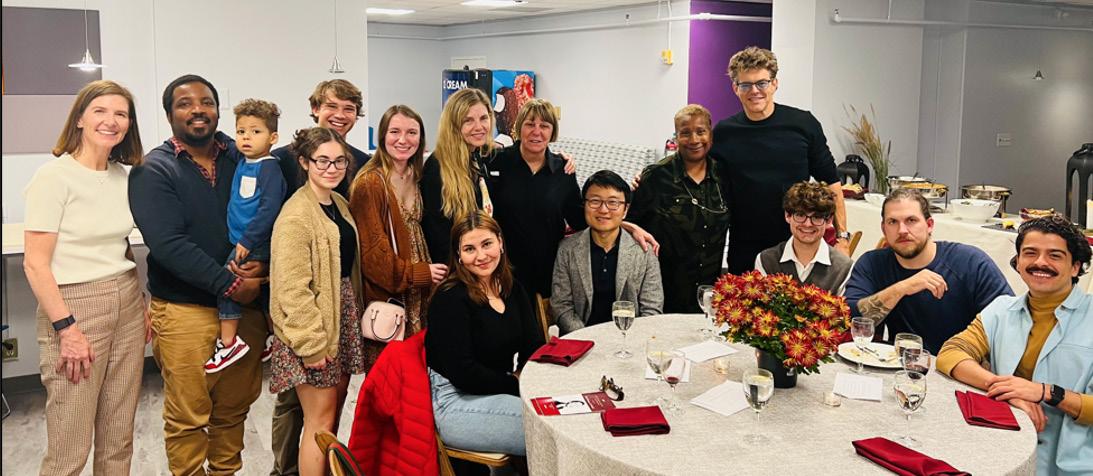
He explained, “We have heard from stu dents in the past that trustees feel like dis tant figures who are inaccessible and may not have the best interest of Vassar students in mind.” Hoping to mend these perceptions of the Board, a total of 43 students and 23 trustees met to informally discuss issues like student employment, financial aid and other personal matters. “These dinners are an at tempt to humanize each group (students and Trustees) in the minds of the other,” Dixon affirmed in an email correspondence.
Students who attended the events ex pressed mixed feelings for their effectiveness.
Leslie Partida ’25 had a very positive expe rience speaking with trustees, confirming that these dinners helped to “humanize” the members of the Board in her mind. “I really enjoyed how one of the trustees told me to fight for the change I want to see at Vassar and that nothing is ever finalized and can be changed,” she wrote in a written correspon dence.
Partida spoke highly of Leslie Chihuly ’83, a trustee with whom she shares a first name and hometown of Seattle. Partida communi cated that the friendly, peer-like conversation
was uplifting: “We talked about a world of things from personal to professional life… [the trustees] also emphasized enjoying our college years because it’s one of the best times of our lives and we’ll never be able to get it back.”
But Charlie From ’25 was underwhelmed by the dinner. In coordination with some other students, From brought up issues like Vassar’s JobX system, federal work-study requirements, low-income student support and the Hazara genocide. In a written cor respondence, From explained how their discussion with one of the trustees was frus trating: “[The trustee] was a low-income stu dent at one point (also from rural [Texas], like me) which resonated with some of us,
but she mostly resorted to talking about how functional the administration is here or how much better the college system is nowadays, which is fair, [but it] still doesn’t recognize the structural problems here.” While trust ees’ support and optimism was comforting, From explained that without change, the night was for nought. They suggested that Vassar adopt a similar program to Williams College by removing requirements for workstudy, and that Vassar admit a larger number of refugees. “Their statements are hollow without action,” From wrote.
The three dinners came just before the launch of the Fearlessly Consequential cam paign. Such an ambition will hopefully serve as a tangible step toward alleviating students’
financial burdens, which is exactly what Vas sar’s student body craves—structural progress with student concerns as the top priority. Dixon explained that the campaign’s $500 million mission aims to ground Vassar as an inclusive and accessible liberal arts institu tion. “Funds raised will help ensure that the next generation can access the educational resources needed to contribute meaningfully to the world,” Dixon wrote.
The dinners accomplished their mission of facilitating conversation between trustees and Vassar students. As for the structural changes within Vassar’s financial policies, change appears to be on the horizon–con ceivably, the new Campaign will fulfill, or get closer to fulfilling, student demands.
Vassar launches Fearlessly Consequential to raise $500 million
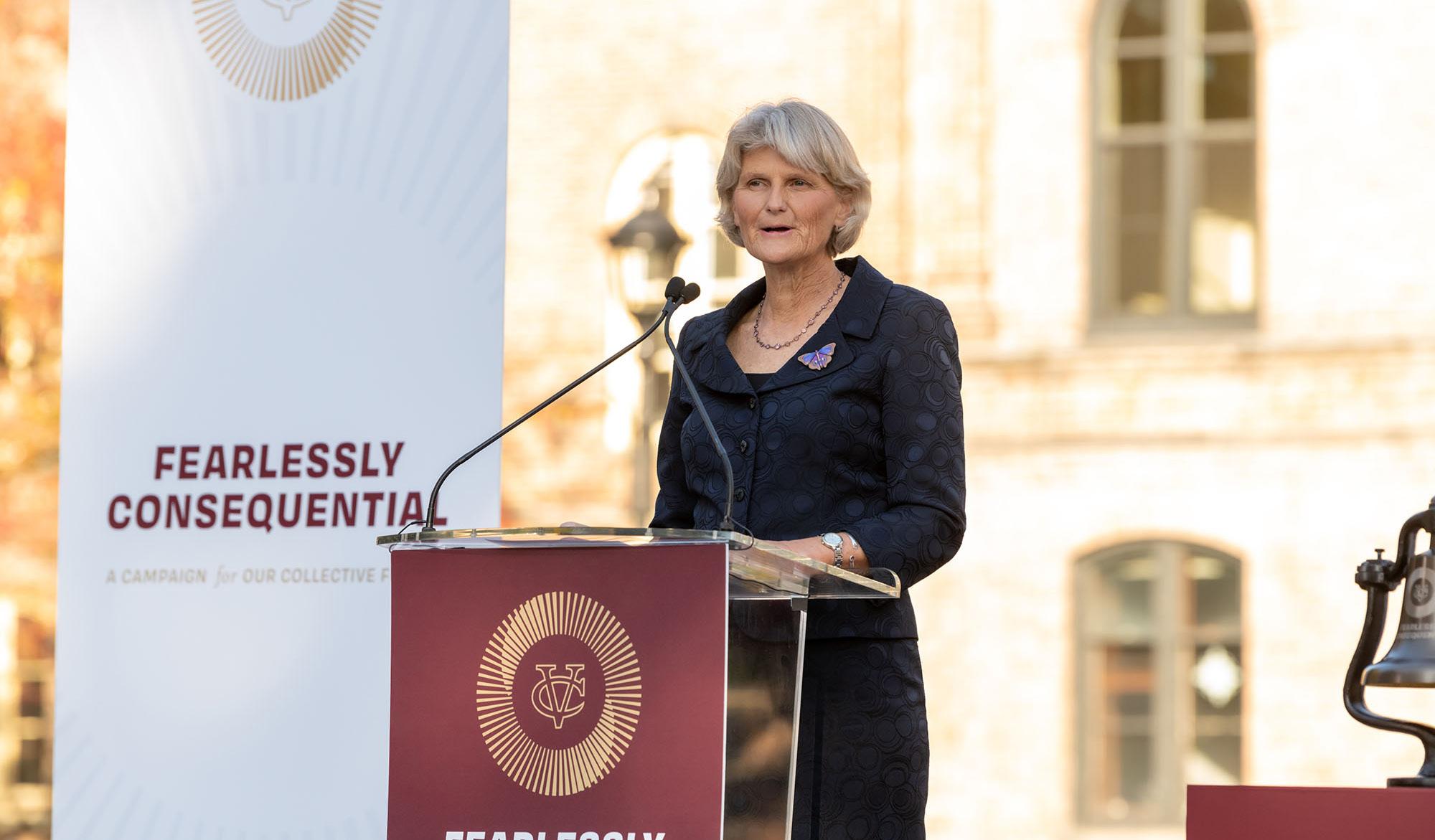

The College has initiated its largest fundraising campaign in history, known as Fearlessly Consequential. A twoday event between Oct. 14 and 15 kicked off the campaign, which is intended to raise $500 million for the purpose of elevating Vassar’s standing, an idea expressed by Board of Trustees Chair Anthony Friscia ’78 to a gathering of more than 300 Vassar community members, per the campaign webpage.
In a written email correspondence, Vice President for Advancement Tim Kane dis cussed the campaign’s origins, as well as its overall structure. “In 2018-19, President Eliz abeth Bradley convened a yearlong, inclusive Priorities and Planning process that included students, faculty, staff, and administrators— culminating in a set of priorities put forward by the Priority and Planning Committee and approved by the senior leadership team and the Board of Trustees.”
He continued: “In early 2020, we began building the quiet phase of the fundraising campaign to support those priorities. We be gan to test those ideas with major prospective donors among our alums and found they res onated quite well.”
According to Kane, the College began to ad vertise the campaign once it had raised $200 million, which it achieved over the summer.
“We announced we had raised $210 million at the launch event on October 15 and now have five years to raise a total of $500 million.”
The campaign is structured around four “pillars,” each of which Kane explained in de tail. “Pillar 1: The Power of the Liberal Arts is a set of priorities that support faculty, students , and curriculum. Student Financial Aid is a major priority in this pillar, as is faculty scholarship and research,” he said. The Col lege plans to add a new Admission & Career Education Center and a Center for Multidisci plinary Study as a part of this segment of the campaign.
Pillar 2: Campus Community, as Kane de scribed, addresses concerns related to the res idential houses, health and wellness and ath
letics and recreation. “Major priorities here include an ongoing commitment to engaged pluralism across our campus, an endowment for additional resources in health and well ness, including mental health, a Sport and Recreation facility, and ongoing improve ments to our residences,” he explained.
The third pillar, Vassar in the World, is concerned with the Vassar community’s im pact on the outside community, and vice ver sa. “Our forthcoming Institute for the Liberal Arts, our goal to be carbon neutral by 2030, new funds to grow people and programs in our Career Development Office, and our community engagement with Poughkeepsie all fall into this pillar,” he described.
The fourth and last pillar, A Campaign for All, is where Kane says that the majority of donors will experience the campaign. “It is our Vassar Fund program (including Genera tion Vassar), to which alums (and students!) can make a gift of $5 or more to help support Vassar. And, it is where our alums (later in
life) leave bequests in their wills to Vassar and whose gifts live on in perpetuity,” he added.
Co-Chair of the Vassar Student Philan thropy Council, Chase Engel ’23, was invited to speak at the campaign launch on how the contributions will have a direct and immedi ate impact on College. “The initiatives for Vas sar’s sustainable future, be they surrounding campus community culture, curriculum, ac cessibility, sustainability, or other important aspects to the Vassar experience, are all very exciting!” they said in a written correspon dence.
Bradley spoke about the beneficiaries of the campaign, stressing that campaigns are often about “paying it forward” to future generations of the Vassar community. She explained, “We must keep building our re sources for financial aid to be able to meet ris ing demand for scholarships. We must keep updating and improving our residential and academic facilities while honoring our his tory. We must keep recruiting and retaining
outstanding faculty and students, and all of this requires financial resources above and beyond what tuition covers.”
She also spoke about the fruits of the cam paign’s labor, the expected timeline for its benefits to pan out. “Some of the effects are more immediately visible—such as build ings like the Institute, Faculty Housing, the refurbished Chicago Hall and parts of Main, and soon, the Admission & Career Education Center; other improvements have been the new computer science classroom, the Inno vation Center and the Mug. The Data Science & Society Development Fund was established along with new endowed professorships in Media Studies and Neuroscience & Behavior,” she described.
Engel added, “Many of the alumni present graduated within the last decade. This makes me hopeful for the Class of ’23 and future classes to also give back to the college and con tinue a tradition of philanthropy and care for the future of all members of our community.”
Choral ensemble Voces8 dazzles with 'Underneath the Stars'
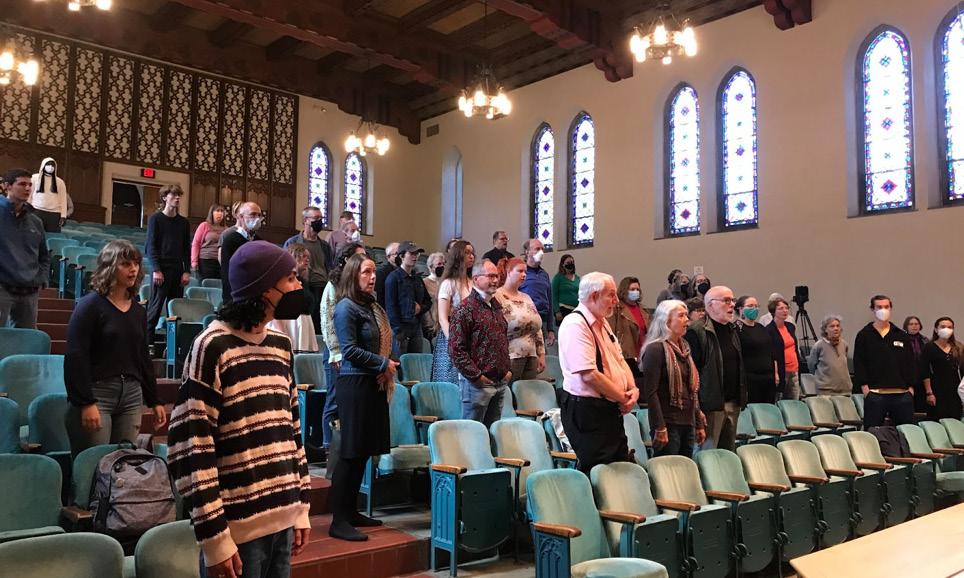
Smith, a founding member of the group and now the CEO of the VOCES8 Foundation, a company consisting of the group itself as well as outreach programs, educational ini tiatives and other methods of musical com munity engagement. The piece, entitled “Nunc Dimittis,” describes the blessing for a peaceful departure, fitting in well with the first section’s themes of death before regen eration. The second act, focused more on re newal, saw the presentation of some choral favorites, including an arrangement of Kate Rusby’s folk song “Underneath the Stars,” as well as Norwegian-American composer Ola Gjeilo’s “Ubi Caritas,” a staple in the contem porary choral canon. In this second half, the group also dazzled with some madrigals, and notably gave a few words describing the meaning and ideas behind these older pieces, which can often seem inaccessible to modern American audiences with their dis tinctly 17th century English vocabulary and sound. These pre-set program notes really
Remembering
Emma Lawrence Guest ColumnistTaylor Swift’s 10th studio album, “Mid nights,” was released on Oct. 21 and is already breaking records. Swift describes the essence of this new project on her Insta gram, saying, “This is a collection of music written in the middle of the night, a journey through terrors and sweet dreams.” With more subdued hues, Swift explores mood ier vocal effects and synths in an attempt to create an audial experience for the listener. Yet, fans note similarities from previous al bums that make this piece nostalgic.
But before “Midnights” was “Red.” Swift isn’t a stranger to crafting heart wrenching, emotional masterpieces on her albums, but “All Too Well” sets her songwriting apart from the rest. On her newly re-recorded version of “Red (Tay lor’s Version),” Swift realizes the uneasy reality of ending seemingly meaningful relationships, and the tumultuous heart break that follows. Each song is artisti cally diverse and unique in its own way, especially the fifth track of “Red,” “All Too Well.” The original five-minute song tells the story, from start to finish, of an innocent girl experiencing a devastating heartbreak with stunning lyricism and metaphor. Rivaling her previous album’s lengthy masterpiece, “Dear John,” Swift displays vulnerability that many artists lacked at the time. The fall imagery keeps the album relevant especially when the leaves turn brown and the temperatures cool.
For those who may not know, “All Too
Well” was originally released on Swift’s fourth studio album “Red” on Oct. 22, 2012. A fervent album housing a variety of her top hits, from “We Are Never Ever Getting Back Together” to “I Knew You Were Trouble,” “Red” skyrocketed Swift to new heights. “Red” encapsulates Swift’s taste for true emotion and her fiery spir it within the imagery surrounding this primary color. “Loving you was burning red,” she exclaims on her title track, and
During this two-hour performance, what struck me the most about this unbelievable group of musicians was its performance practice, understanding of the music and interaction with each other onstage. While it certainly takes skill to perform classical music well, it is an entirely different level of ability to perform with such a knowledge and understanding not only of the reper toire, but also of everyone performing with you. VOCES8 performed as one unit, one brain with eight voices. It was unlike any thing I had ever seen or heard.
A group this skilled could well have sim ply offered this fantastic performance, and we as a community would have certainly been grateful. However, I cannot say enough how much of a joy it was to hear firsthand VOCES8’s methods of performance practice, and how the group individually coached the members of the Vassar choirs to teach them how to better convey the music. In addition,
the group spent time in the workshops to talk about composition, arranging, building an online brand as a musician and understand ing the contemporary landscape of classical music. All of this is invaluable information to young classical musicians, and it gave me such a great perspective on the industry.
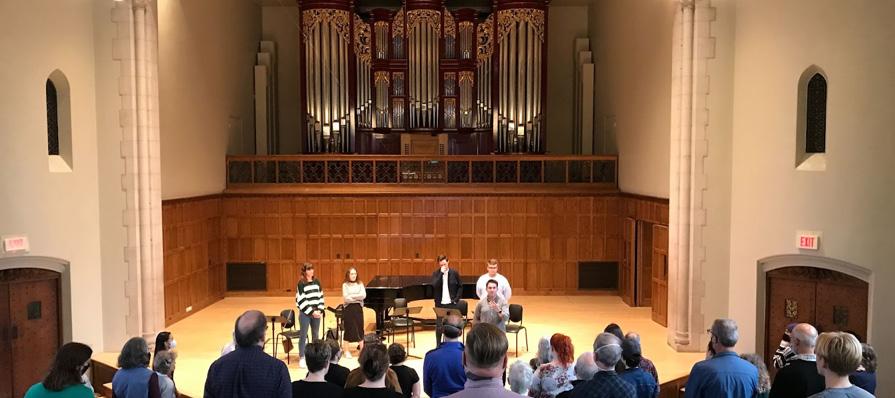
VOCES8 was an absolute joy to hear per form and to work with, and I am so grateful to the Music Department for bringing the ensemble to our campus. The group’s skill and professionalism are unmatched, and their willingness to spend time working with the choirs showed an immense com mitment to music education and outreach. Voces8 truly made the weekend one I will never forget.
Note: VOCES8’s Exclusive North American Booking Representative: Opus 3 Artists; Gen eral Manager: Edition Peters Artist Manage ment.
albums later
ute Version)” improves upon the original by making her audience privy to specific details she was too frightened to share as a young woman in the music industry. The extended version is a byproduct of Swift’s numerous years as an artist; it depicts her growth not only as a songwriter, but as a person as well.
the profundity instilled by the specificity of the new version.
her transition in genre, from country to pure pop, changed the course of her ca reer.
And while “All Too Well” as it was orig inally released boasted excellent, emo tive lyricism, on Nov. 12, 2021, the ru mored, 10-minute version of her iconic hit was finally released, and it surpassed all expectations. “All Too Well (10 Min
Arguably, the most profound lyrics lie in the sixth verse before the outro: “And did the twin flame bruise paint you blue?/ Just between us did the love affair maim you, too?” A twin flame is the idea that one soul can split into two separate bod ies, creating an intense connection that reveals one’s deepest insecurities, fears and passions. Each person is thought to be a part of a missing half, and when they unite, a fire so strong ignites that it cannot be extinguished. Through delicate word play, Swift explains that the relationship left a mark on her that will take a while to heal. The use of color to symbolize emo tions is a common theme within Swift’s discography, with blue typically being associated with wistful and heartbroken feelings. To put it plainly, Swift asks her ex-lover if they are upset about the loss of their relationship, but this matured ver sion creatively twists her words into poet ry. Furthermore, calling her relationship a “love affair” lessens the validity of their relationship, as “affair” contains a “Scarlet Letter” connotation. The juxtaposition be tween her deep emotions and his noncha lant attitude towards their love reveals the depths of Swift’s heartbreak. Without the additions of these lyrics, the song lacks
With the newfound additions to Swift’s enigmatic story, “All Too Well” has aged gracefully. Even though there are new musical elements incorporated into the extended version, Swift ensured that the nostalgic original lyrics remained un touched. She understood the impact that the premier lyrics had on her 2012 fans and aimed to create a complex addition that depicted her growth as a songwriter and woman.
For those who were fans of Swift for her original 2012 release, they undoubtedly understood the intensity of her whirlwind romance. The newly improved 10-minute
version is a ghostly, nostalgic flashback that paints a picture of a matured wom an examining her first love specifically, while the original is more universal. Her fans grew with the song over the years. This extraordinary, mature lyricism is why “All Too Well” should be rendered a classic.
“And while 'All Too Well' as it was originally released boasted excellent, emotive lyricism, on Nov. 12, 2021, the rumored, 10-minute version of her iconic hit was finally released, and it surpassed all expectations.”
“She understood the impact the premier lyrics had on her 2012 fans and aimed to create a complex addition that depicted her growth as a songwriter and woman.”Image courtesy of Kim Andresen.
'Mosquitos' sets the stage for senior drama thesis season
Sophia Wood Guest ColumnistSenior drama thesis projects have official ly begun, and the season is off to a great start. Between Oct. 6 through Oct. 8, 2022, the first of these projects in the Drama Department have been performed in the Powerhouse Theater. “Mosquitos,” by Lucy Kirkwood, and directed by Louis Blachman ’23 was a huge success, with performances sold out each night. Senior members of the show included Clae Rountree ‘23, Theo Du clo ‘23, Lena Pepe ‘23, Balfour Clark ‘23 and Blachman, and they did not disappoint. Set in Luton, England, and then moving to
Jenny (Pepe), a skeptic and superstitious woman who smokes, drinks and is con stantly seen as less than in the eyes of their mother. Very early on, the audience learns that Jenny, who after years of trying to get pregnant, and succeeding through In-vitro Fertilization, has lost her daughter to the measles after refusing to give her the MMR vaccine due to its controversy. Following this tragic loss, she comes to stay with Al ice and Alice’s smart but complicated son, Luke (Duclo).
In Blachman’s production, the cast and crew did not come to play, and they left no crumbs behind. The intense and raw emotions of scenes between Rountree and
Geneva, Switzerland, the actors performed the entirety of the show with accents, an impressive feat, especially considering the show ran for two-and-a-half hours.
“Mosquitos” debuted in 2017 at the Na tional Theatre in London, UK, originally starring Olivia Colman and Olivia Wil liams. The show combines many ideas into one, examining themes of science, mental health, coming-of-age and so many more. There are no side characters in this narra tive, and the audience can feel a connec tion to all of the characters, each of whom becomes a protagonist in their own way. It primarily tells the story of two sisters, one, Alice (Rountree), a scientist working on the discovery of the Higgs Boson, also known as the “God Particle,” and the other,
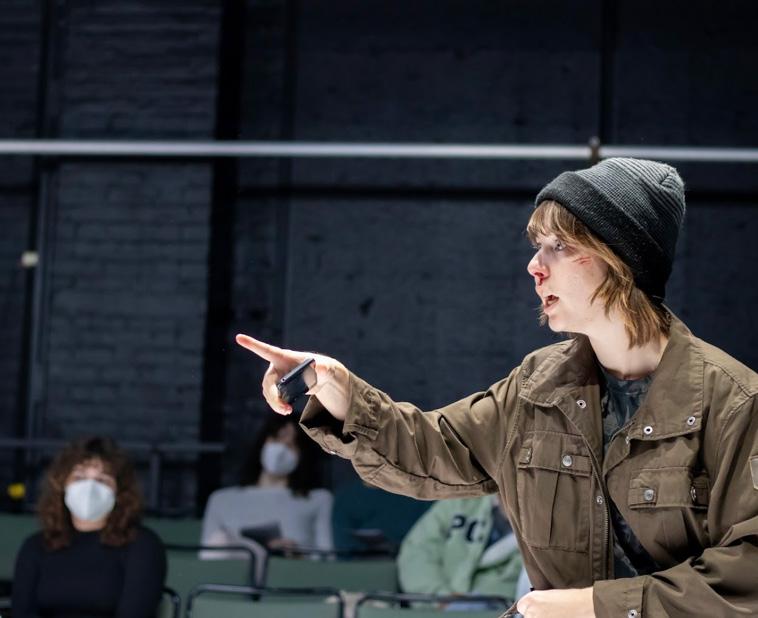
Pepe perfectly encapsulated a complicated, but loving relationship between siblings. There were moments when the house was silent in shock and awe at the force behind the two actors. In some instances, I even felt my heart drop into my chest. In the two-and-a-half hours that I was on the edge of my seat, I grew fond of the characters, completely forgetting that the people in front of me were friends I see every week, and truly believed them to be these char acters that they were portraying. When an actor can make you believe they are not an actor, especially when you know them personally, that’s how you know they are talented.
The show was filled with uncomfort able moments that only made it feel more
real. In the last scene between Luke, and Luke’s crush Natalie (Kalia Dunn ‘25), you could feel the audience members squirm ing in their seats and the empathy they had for Luke. At one point, when Duclo got down on the ground and curled up into a ball, yelling “STOP IT,” I was frozen. You could feel the pain, the embarrassment and the regret. The tension in the room was so thick, you could cut it with a knife. Sitting in the darkness of the scene change after wards was the best kind of bad feeling, your heart racing and not knowing what would happen next.
With all that being said, there is still one more person among these cast members that absolutely captured my attention the entire time. Entering by throwing an apple off of the catwalk from above, Clark held
dra Polur Gold ‘25, Joe Baldwin ‘24, Vi To ‘24, Yuchen Zhou ‘23 and Erin Mee ‘24 were also incredibly cast in their roles as Natalie, Karen, Alice and Jenny’s mother and the ensemble, respectively. Entering the Pow erhouse and watching the ensemble of sci entists walking around the stage and writ ing down notes in their white lab coats was an extremely eerie first glimpse at what was to come. Their roles in the show were essential to the story telling, and Blach man’s directorial vision truly came to life through this ensemble of actors, alongside many of the technical details.
Blachman’s use of lighting, projection and sound allowed for the intensity to build throughout the production, and his atten tion to detail, such as quick lighting cues to match actors’ movements, fit extreme
a power over the audience throughout the whole show. Playing both The Boson as well as Alice’s boyfriend, Henri, Clark’s deeply emotional scenes with Pepe and lengthy, passionate monologues kept the audience focused in this imagined world. At one point in the show, Clark’s character broke the fourth wall, making a comment about the audience probably not following along or knowing what was happening. He even singled me out, saying, “Uh yeah, nope” as I was sitting in the front row. I felt a little personally called out, but in a good way, if that makes sense. It was so inter esting to be pulled into the show through Clark’s lines, and honestly made my ex perience somewhat more enjoyable, to feel the fourth wall broken and feel like I was really a part of the experience.
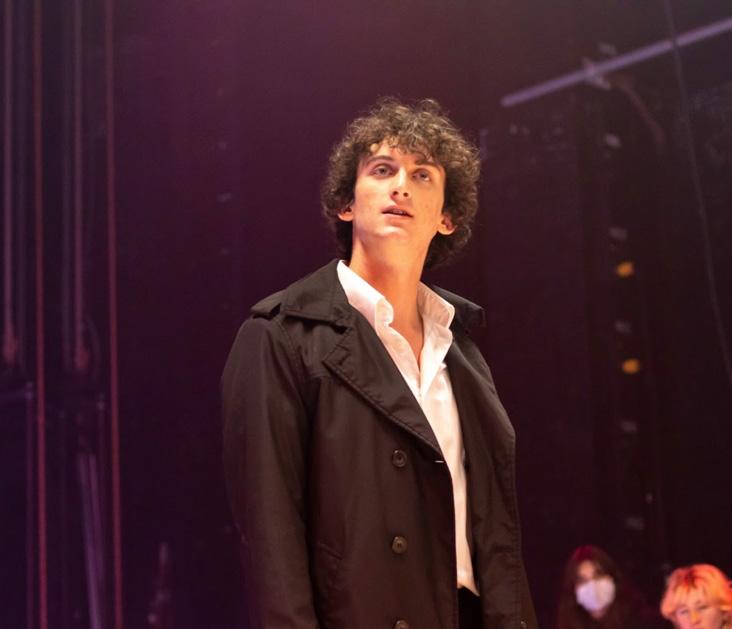
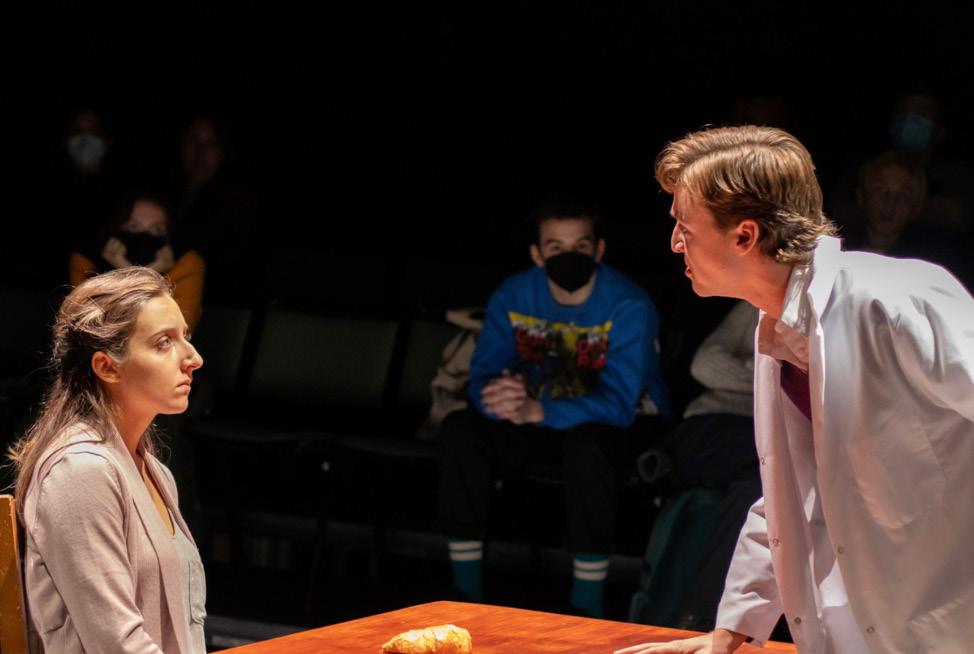
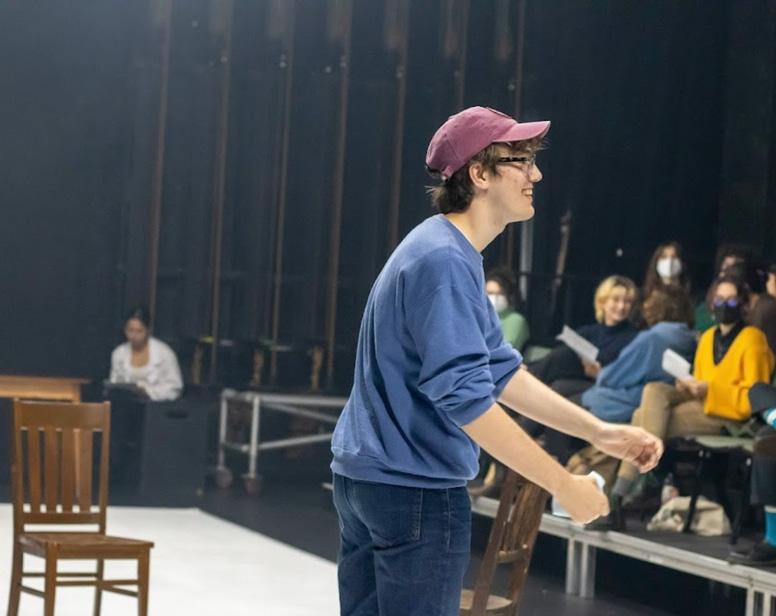
The other cast members, Dunn, Alexan
ly well into the story telling. Liam Oley ʼ25 accompanied the show on live piano, which added to the dramatics and height ened the sense of uncertainty throughout the show, making it feel all the more high stakes. A huge shout out to the lighting and sound designers on this show, as having that amount of accuracy and storytelling expressed through such subtle details is an incredible feat.
Overall, the outcome of the first senior thesis drama project should be reason enough to believe that we are in for another great season of student productions. From the acting to the technical pieces of the show, “Mosquitos” was absolutely incred ible, setting the stage for the shows yet to come from the Senior drama majors this year. Bravo to the entire cast and crew, and here’s to another great year of theater!
'A Strange Loop' examines identity, society, artistic unconcious
Jesse Koblin Guest ColumnistStuck in Manhattan traffic on a recent Fri day at 8:10 p.m., I and a busload of Vassar students thought we would miss the eve ning performance of Michael R. Jackson’s “A Strange Loop.” Fortunately, the traffic cleared, and the excellent theater staff seamlessly seat ed us in darkness just as the show had begun. And lucky that we made it, because the Tony and Pulitzer Prize-winning Broadway musi cal was irreverent, iconoclastic, and scath ing—yet beneath its thunderous critique and social commentary was introspective dark ness where artistic insecurity meets questions of identity.
The musical follows a young Black gay man named Usher through a spiraling metanar rative where he writes a play about himself writing a play. The story the audience engages with becomes a platform for Usher to voice his insecurities about his art as it relates to his personal, racial, and sexual estrangement from various social groups. Throughout the performance, the musical’s ensemble plays characters from Usher’s life, such as his lov ing but religiously homophobic mother, his indignant drunkard father, and a racist, hookup-organizing libertine named “Inwood Daddy.” These are characters both from Ush er’s real and imagined life and reflect parts of his character, all contributing a mosaic of his personality, backstory and identity that, by the show’s end, forms a startling profile of how radical creativity is both encouraged and crushed by social and identity-based pres sures.
Currently staged in the historic Lyceum Theater in Times Square, “A Strange Loop” retains the raw, unadulterated sincerity of its original off-Broadway production. It often makes fun of its Broadway counterparts and, at one point, depicts a Broadway acolyte car
rying a poster for “The Lion King” and raving about “Wicked.” Broadway plays, to retain mass commercial appeal, are often neutered of foul language, explicit sexual content and radical sociopolitical messaging; ‘A Strange Loop” not only utilizes but revels in all of these artistic decisions, crafting a narrative that doesn’t flinch from portraying racial slurs, visceral sexualization and overt discussion of anti-hegemonic philosophy. This unfiltered content is most often used for humor and ten der sincerity, punctuating jokes with an out rageous expletive or underpinning an emo tional moment; in the song “Second Wave,” Usher sings with complete honesty, “[T]he second-wave feminist in me/ Is at war with the d**k-sucking Black gay man.” Unfiltered delivery makes “A Strange Loop” hilarious and heartfelt, with the audience laughing at the scenarios and phrasing while sympathizing with the narrative content. Other times, the explicitness is used to shock and disconcert— in an early scene, Usher is talking to a white man on the train before the man’s dialogue abruptly shifts to overt racism and homopho bia, degrading Usher in the most repugnant terms imaginable. The use of taboo content for both uplifting and unsettling tones ce ments “A Strange Loop” as a revolutionary disruption of Broadway’s norms and values.
Just as interesting as the use of unflinching language is the heady philosophical content of the play. The show’s name references the “strange loop” theorem coined by Ameri can cognitive scientist Douglas Hofstadter (also, musician Liz Phair’s 1995 song of the same name). This theory suggests that the construction of individual identity is part of a string of symbolic images our mind in takes and rewrites around the “I,” eventually forming a personality made of actual events interpreted into narrative fiction cyclically re written with new suggestive photos. This the ory suggests that we are all cognitively fiction
writers constructing the “I.” The theory posits that a unified, continuous version of self is false; it’s mirrored brilliantly in Usher’s playwithin-a-play, where, through writing about his experiences, he is actively relearning and reconstructing his identity, as expressed by author Douglas R. Hofstadter in the book “Gödel, Escher, Bach.”
The narrative of “A Strange Loop” is struc tured around thematic, piano-led motifs and smaller musical numbers, creat ing strong continuity and more interiority in Usher’s character. There are also excellent theatrical numbers, usually catchy glam rock like “Exile in Gayville'' or orchestral melodic solos like “Boundaries.” Among the best songs of the show is “Tyler Perry Writes Real Life,” a tongue- in-cheek takedown of the titular creative where the spirits of Black historical figures such as Harriet Tubman, Zora Neale Huston, James Baldwin and Whitney Hous ton rise from the dead and accuse Usher of being a race traitor, set to dramatic rock-opera instrumentals. But for me, the show’s high light is the seven-minute epic “Precious Little Dream / AIDS is God’s Punishment,” which punctuates the musical’s narrative and dra matic climax. The first half, “Precious Little Dream,” portrays an argument between Ush er and his mother. Two minutes in, the stage suddenly draws forward, a massive, glowing red cross descends and Usher steps out dressed as a preacher, the rest of the cast dressed in silver choral robes. The second half of this number, “AIDS is God’s Punishment,” is a per cussion-led ode to Black Gospel music, filled with Biblical allusions and religiosity blended with sardonic, self-critical homophobia. The song’s call-and-response provocations leave the audience uncomfortably drawn into a song promoting hatred and exclusion, prov ing the number’s point—that it’s scarily easy to support hate when you package it in spectac ular presentation and a sense of community.
Michael R. Jackson’s fantastic writing and music are essential to conveying “A Strange Loop”’s intricate narrative, but the acting injected an element of pathos that truly en gaged the viewer in Usher’s struggles. Usher’s understudy Kyle Ramar Freeman, the actor in our performance, completely embodied the role, physically and vocally exemplifying Usher’s low self-esteem and tortured sense of identity through his defensive posture and quiet lines, often broken by hysterical, explo sive rants that sell Usher’s hidden brilliance. The rest of the ensemble’s acting was equally powerful. Among the most notable perfor mances was by John-Andrew Morrison, who portrayed Usher’s mother with tortured ear nestness in the impressive, four-minute solo performance “Periodically,” a bizarre amal gam of prayer, sermon, impassioned rant and vulnerable venting through the medium of voicemail. Also striking was Jason Veasey, who played Usher’s father with an uneasy del eteriousness that inspired tension every time he appeared—both versions of “Didn’t Want Nothing” were brief but powerful interludes carried by his foreboding delivery.
“A Strange Loop” pushes many boundar ies—but all the right ones. By setting up a complex dialogue between Usher—and Jack son’s—inner voices, both high and low, funny and full of pathos, the play captures so much of the complexity and humanity of life, espe cially where it concerns social identity and belongingness. With an all-Black cast, overt representation of queer life and a heady met anarrative, “A Strange Loop” is as sensational as it is culturally significant, both within Broadway history and by presenting voices that have never made it to the stage before. A special thanks to the Vassar College Ticket Fund and Campus Activities for arranging the viewing of this fantastic show, which will play its final Broadway performance on Jan. 15, 2023!
very
Allison Lowe Guest ColumnistFall is officially underway here in Pough keepsie, and I, for one, could not be hap pier. The maple trees throughout the quad have turned bright red, miniature pumpkins are being sold at the Arlington farmers’ mar ket and apple cider donuts seem to be every where. To get in the spirit of the new season, I always like to read a few autumnal poems. Today, I wanted to share a few of my favorites with you. Hopefully, you can read and think about these around campus in order to feel the true essence of a fall spent at Vassar.
Pulitzer Prize-winning poet and former Vassar student Mary Oliver composed a per fect poem for reading as you sit on a bench somewhere on campus. In “A Song for Au tumn,” she writes, “In the deep fall/ don’t you imagine the leaves think how/ com fortable it will be to touch the earth instead of the/ nothingness of air and the endless/ freshets of wind?” She continues on, “And don’t you think/ of the trees themselves, especially those with mossy,/ warm caves, begin to think/ Of the birds that will come— six, a dozen—to sleep/ inside their bodies?”
Maybe Oliver was thinking of her own experiences of autumn at Vassar during the ’50s, when she wrote “A Song for Autumn.”
It’s certainly nice to imagine the leaves that have already fallen all over campus to be happy and comfortable on the ground. And as the temperature is cooling, maybe the trees in the Ecological Preserve have begun to welcome dozens of sweet birds to “sleep in
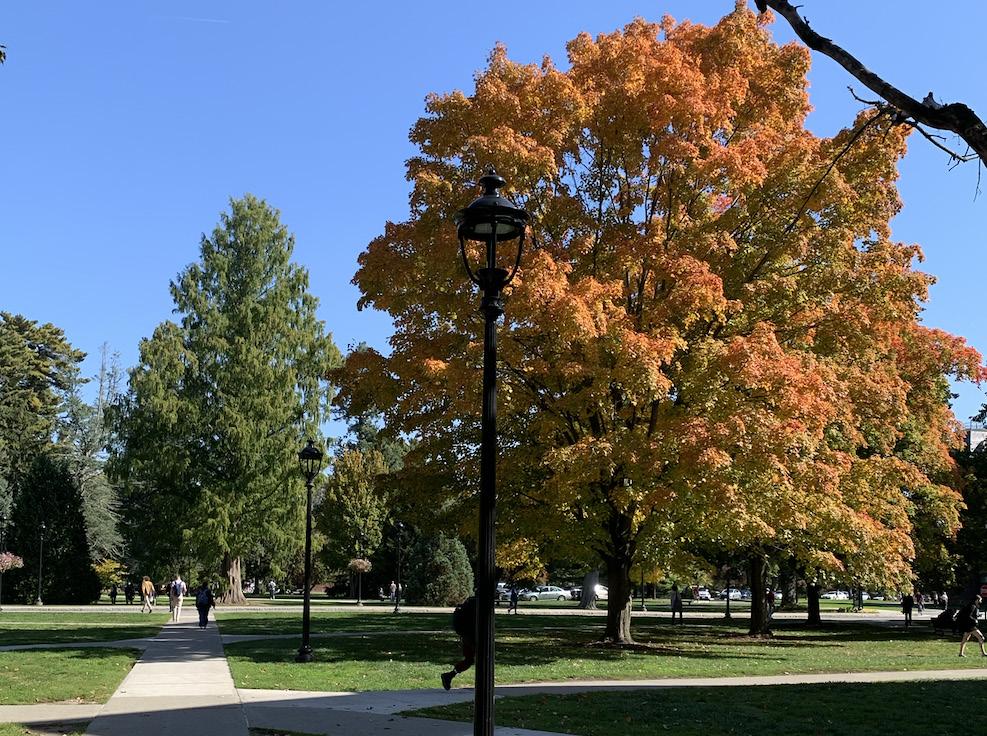
side their bodies.” In order to truly channel Oliver’s nature-loving energy, I recommend that you get a cup of hot chocolate from the Deece (if the hot chocolate machines are miraculously working) and go for a walk around campus, looking for happy leaves and cozy birds along your way. Who knows, maybe you’ll be looking at the same trees and ponds that Oliver herself looked at when she was here, all those decades ago.
While she never attended Vassar, Ada Limón was just recently inaugurated as the 24th Poet Laureate of the United States, so her work is well worth a read now (or any time). In “It’s the Season I Often Mistake,” which appeared in her newest collection
“The Hurting Kind” from Milkweed Edi tions, Limón writes, “Birds for leaves, and leaves for birds./ The tawny yellow mulber ry leaves/ are always goldfinches tumbling/ across the lawn like extreme elation.” She continues to muse about this concept of the similarity between birds and leaves during fall, saying, “And today, just when I/ could not stand myself any longer,/ a group of field sparrows, that were/ actually field spar rows, flew up into/ the bare branches of the hackberry and I almost collapsed: leaves/ reattaching themselves to the tree/ like a strong spell for reversal.”
Have you also been having the problem of mistaking leaves for birds? I haven’t ex perienced this yet, but one can always hope.
Maybe you’ll see some particularly leaf-like birds, or bird-like leaves, while walking to class. If you do, you’ll have to let me know. This is supposed to be the most magical sea
son, anyway, with the “strong spell[s] for re versal” and all.
To finish us off, I’ll be sharing a poem by Sanni Wani which originally appeared in an issue of Savant-Garde. In “Good morning, the sun in October,” Wani writes, “[the sun in October] makes the leaves look like they have been spun out of gold/ and there are
and wake up as a frond/ and ask, ‘When did I turn to gold?’”
The sun in October truly does create some magical light. I’m sure that you’ll catch a glimpse of it, turning every tree and building on campus gold, many times this month. I hope that, on one of our increas ingly rare sunny days, you’ll find the time to
several kinds of hickory trees growing out side/ my window.” She continues, “When autumn light bleeds new colours/ into things, or out of them, a garden snake will take a nap/ on the warm wood of a branch
sunbathe, maybe on a bench in the quad or on the grass by Sunset Lake.
In any case, I hope these verses have pro vided a beautiful and poetry-filled start to the fall season!
Writer reccomends ways to make fall fun
for self-care and mental health. Hear the leaves crunch beneath your peers’ feet. Feel the cold wind on your skin. See the beau tiful red and orange trees as you sway back and forth on your hammock.
Drink hot drinks
With the air losing its summer warmth, a hot drink does wonders. When the ma chines actually work, I am a huge fan of the hot chocolate from the dispensers in the campus dining options. But be careful: your hands may warm up too much when the
hot chocolate splatters all over you. Wheth er you’re a coffee, tea or matcha lover, have a moment of seasonal gratitude while you sip on your warm beverage.
Apples
Who doesn’t love apples? Actually, if you don’t, please don’t tell me because it will hurt my feelings. Since I love apples so much, I try to gorge myself on as many ap ple-acquainted products as possible: cider, juice, pies, muffins, donuts. Pro tip: If you can’t get your hands on a pumpkin this year, carve an apple! Even the Deece’s cutlery is
capable of scraping off the skin of an apple, so get creative.
Cozy up and read!
Sorry in advance to all the students in humanities classes; trust me, I can barely stomach the idea of reading more than the bare minimum for class. However, fall is the perfect time to curl up on your Twin XL bed with a cozy blanket and fall deep into a book. If you’re feeling especially autumnal, you could combine a few of my other tips and drink some tea or wear a flannel while you read.
Taylor Swift once said that “August slipped away into a moment in time.” She never misses! Summer slipped away a while ago, and soon Fall will too so embrace it while you can. Be sure to capture your fun fall moments to look back on in the years to come. Though I tried to highlight the most prominent ways to celebrate autumn—mi nus the candles, of course—the list is by no means exhaustive. There is no one way to celebrate fall, so no matter which way you choose to embrace the energy, I wish you the best.
Drawing connections between mellow Americana and horror
Kai Speirs Features EditorThere is something horrific in cookie-cut ter homes with hospital white trim and manicured lawns greener than any wild evergreen. The silence of suburbia, broken only by the sound of a car's engine kicking alive. Even while biking through the warm autumn sun, seeing light reflected through amber leaves, there was a nauseating feeling that it was all too good to be true. And yes, this dreamy Americana afternoon I floated through with three friends ended full stop with startled faces, a red gash flowing fast and the mutilated bike with its front wheel still spinning in the grass. Mellow Ameri cana, broken by senseless horror.
*My friend is fine; if you see him at the Deece with a huge scab on his forehead, give him some much deserved sympathy.*
In the days after this accident, which hap pened the first Saturday of October break, the sudden rupture of the mellow dreaminess
of suburban America stuck with me. I have never lived in the suburbs. I’ve never mowed a lawn; I’ve rarely watched football on Sun day; I rarely ever barbequed; I never went camping with my family. While I think I am glad that I didn’t grow up behind a white picket fence on a street with a cul-de-sac, in a place where you have to drive to get any where, I do sometimes romanticize this aura of life. It's a nostalgia for something I never had, a look into the snowglobe life of mel low Americana. As real as this yearning can sometimes be, it has always come married to a real sense of horror, a queasiness that puts me on edge. For me, it is in scenes of the most intense mellowness where horror can strike deepest.
The film industry since the ’70s gets this. It was around this time that American horror cinema turned away from the gothic and into realism. The setting of horror turned away from vampire castles, gothic mansions and dark museums to give way to suburbia, Main
Street, the family home. Horror entered the recognizable spaces from day-to-day life; it seeped into the suburbs that were, at the time, new and fashionable; it invaded spaces that seemed safe. With films like “Nightmare on Elm Street” (1984), “Poltergeist” (1982) and “Halloween” (1978), an entire genre of hor ror was built around the icons of suburbia, which were easily recognizable to millions of people.
Suburban horror didn’t only exist in film; in fact, the craze in Hollywood came after the real-life horror stories of Ted Bundy, the Golden State killer and John Wayne Gacy. The killings committed by these psychopaths ruptured the manicured calm of suburban life and exposed a frightening psychological underbelly of America. It's no wonder these events became inspiration for filmmakers to explore the unveiling of suburban life in sud den psychological and then physical violence. In these suburban horror films, the safety, comfort, cultural homogeneity and homeo
stasis so desperately desired in the suburbs were suddenly invaded by senseless violence. In an instant, the everyday becomes horrific.
My status as an outsider to this mellow suburban American life and my love for hor ror films synthesize to manufacture a real fear for anything suburban, for anything too calm. Both in film and in real life, the image of calm suburbia feels like a very thin veil hiding horror beneath.
And it's true: suburbia not only fails to pre vent horror, its veiled aesthetic only increas es the feeling that it’s hiding something. It hides the horror of the racist history behind property ownership, it hides the violence of land accumulation by white settlers, it hides the violent psychological distress of millions of Americans, it hides violent homelife and abusive relationships, it distracts from the violence of the American project abroad and it hides the randomness of life and all its hor rific accidents.
Happy Halloween.
Local vegan business serves Poughkeepsie area
 Maryam Bacchus Design Editor
Maryam Bacchus Design Editor
As a lactose intolerant person, one of my favorite activities is ignoring this key component of my health and satisfying my dairy-based cravings. For a while, I thought there was no solution to my undying love for all things cheese other than popping a Lactaid and hoping for the best; then I met my best friend. He introduced me to the wonderful world of veganism, and though he hasn’t completely converted me, I have been able to (mostly) commit to a limited animal-product lifestyle by choosing vegan alternatives. The best part of the journey has been finding foods that taste almost exactly like (or sometimes better than) their dairy-based alternatives. However, diet changes do not come without their own obstacles.
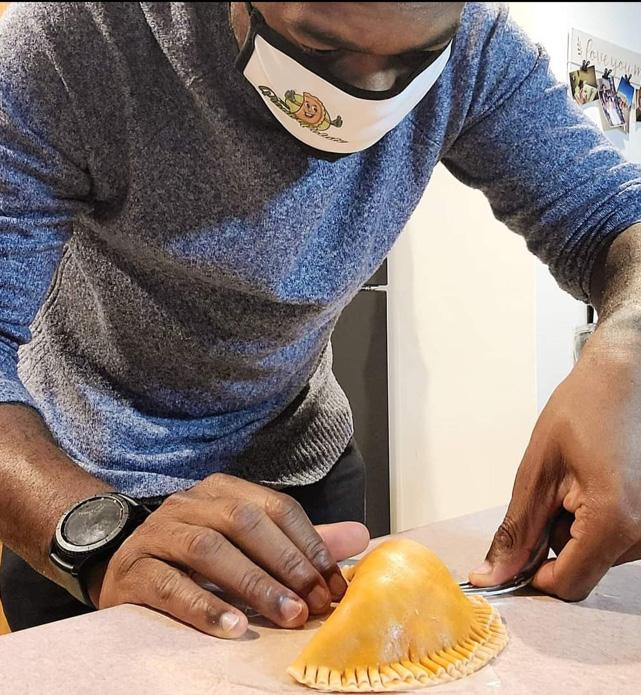
Maintaining nutrition from dining hall food can be challenging, and dietary re strictions make it even harder. Fortunately, Vassar caters to vegan individuals by always serving vegan options at Root. However, as
is common in all sections of the Deece, Root is not always a hit. My default when I do not feel like taking a chance, particularly on the weekends, is ordering takeout—but there are not always diet-friendly options. Enter a hid den gem of the local Poughkeepsie area: The Plant Palate.
The Plant Palate was founded by Pough keepsie local Anthony Taylor in an effort to demonstrate flavor-rich foods made of plant-based ingredients. Taylor went vegan immediately after watching the documenta ry “What The Health.” He eventually shared his recipes with family members and cowork ers, and after an overwhelmingly positive re sponse, decided to begin taking orders. Thus, The Plant Palate was born. My positive expe riences with the business and Taylor’s story have become a key part of my motivation to continue pursuing a vegan lifestyle and find other fan-favorite recipes that can be vega nized. If you find yourself in a similar situa tion, The Plant Palate is a great place to start!
As of now, the business does not have a brick and mortar location. Instead, all food is delivered by Anthony Taylor himself! Placing an order is quick and easy: Menus are posted to Instagram every other Monday, and the deliveries are made the subsequent Sunday. I recently tried the mac and cheese, empana das and short ribs. As a long-term fan of mac and cheese, I was thrilled to find an arguably better option that—get this—does not hurt my stomach! The flavor profiles of the empana das and short ribs were also reminiscent of an oh-so-cherished home cooked meal. I think I just found my favorite Sunday comfort food.
If you find yourself experiencing the Mon days and needing something to look forward to, I definitely recommend checking out The Plant Palate.
Student life at Vassar: A first-year spotlight in pictures
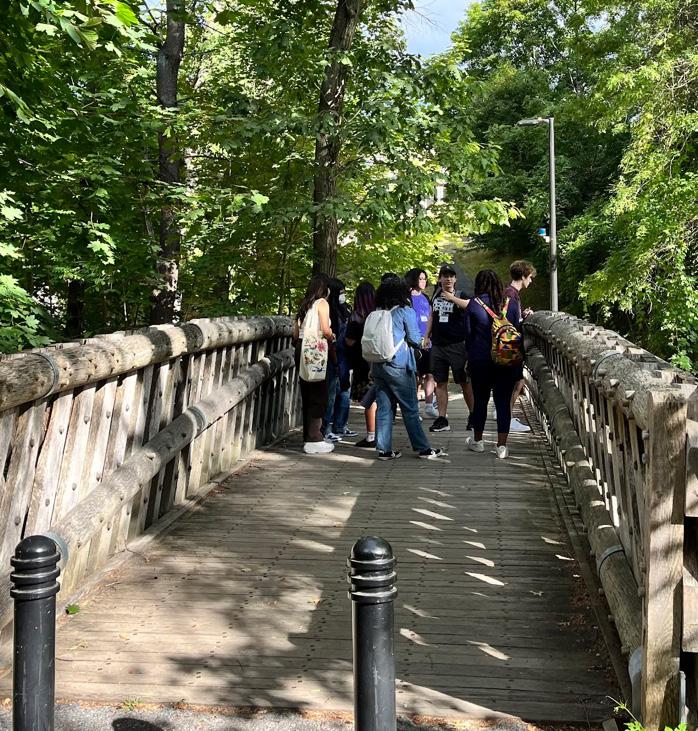 Richard Lu Guest Columnist
Richard Lu Guest Columnist
My first month at Vassar College has been an adventure. It’s given me op portunities to learn more about myself and the world around me. As an avid photogra pher, I caught these moments on my cam era. Now I’m here to share my experience and highlight what life is like at Vassar. I hope this read gives everyone a sense of the connection Vassar students share with one another while living together on campus.
Thai food is delicious. I went with a friend this past weekend to Thai Spice, a restaurant located outside of campus on Arlington Avenue. The dish I ordered was a delicate balance between sweet, savory and spicy. The lime and garnishes added a special touch. You’re not limited to the choices inside campus.. Vassar also offers many options in terms of food with their $105 allotted “Arlington bucks” per semes ter, which you can spend at nearby stores and restaurants to your heart’s desire.

I was at Blodgett Hall on a cloudy Sunday to stop by for office hours in preparation for my economics exam. Though it's far from the center of campus, the long walk is worth it for this fantastical building (though some
students don’t have a choice in that matter). The green grass wonderfully contrasts with the monotone colors of Blodgett’s exterior appearance, giving this space a unique spot on this list of photographs.
This is one of the first ever pictures I’ve tak en on campus and it remains a dear memory of mine. Summer break had just ended and my orientation group was touring the Casper Creek on this warm day. I managed to snap a picture of everyone standing on the bridge, which links two masses of land separated by the murky river beneath it. In the background stands tall trees reflecting the light of the trail ing sun in the sky. There’s no denying that Vassar has the most scenic campus in New York, and this spot proves it!
Everyone who has visited the library has seen this sight at the end of every hall way. Many old books collect dust on these packed shelves. Some books even date back to the 1850s, representative of Vassar’s long history. The hallways are so quiet that you can easily hear a pin drop. If you’re not careful, you may get lost! On this day, I was searching for a friend to make some finishing touches on a group project, and it took me nearly half an hour to find them. The size may be overwhelming at first, but you will come to love the serenity of this invaluable space. You’re not a true Brewer until you walk across the empty hallways of the Thompson Library.
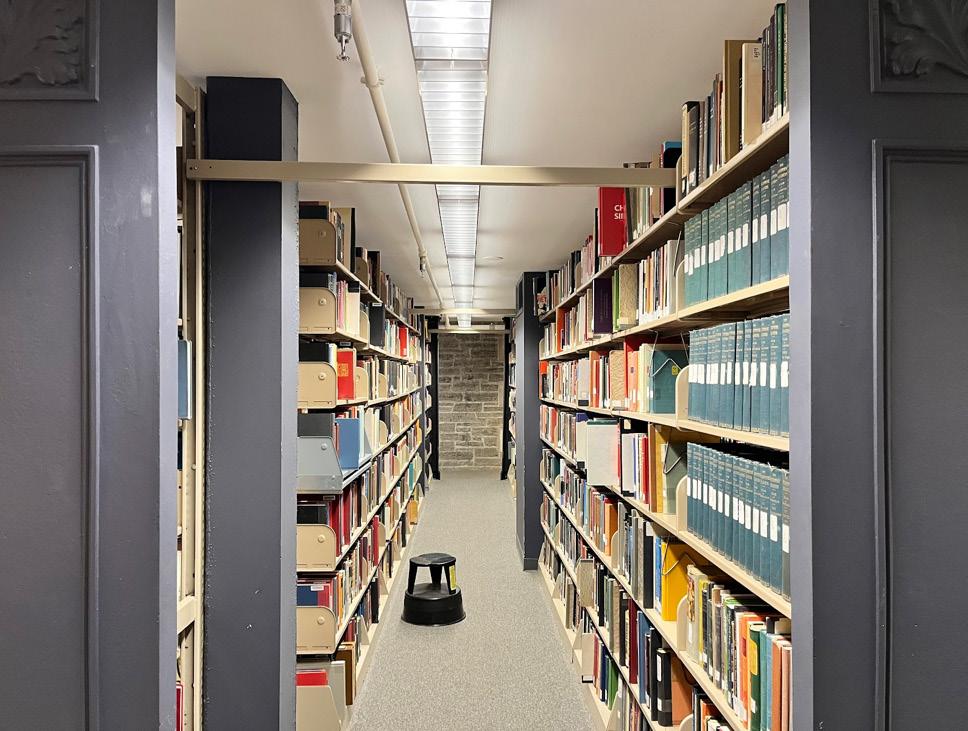
As part of orientation week, the incom ing class had to participate in the Brewer Games: an event where the nine residen tial houses at Vassar compete for the title of best house. I was able to take a picture of the ongoing festivities. In this picture, first year students living in Josselyn house are holding up the “Joss is Boss'' banner in anticipation of the event. With their body paint and green attire on, the students were ready to win. Josselyn house finished in third place.
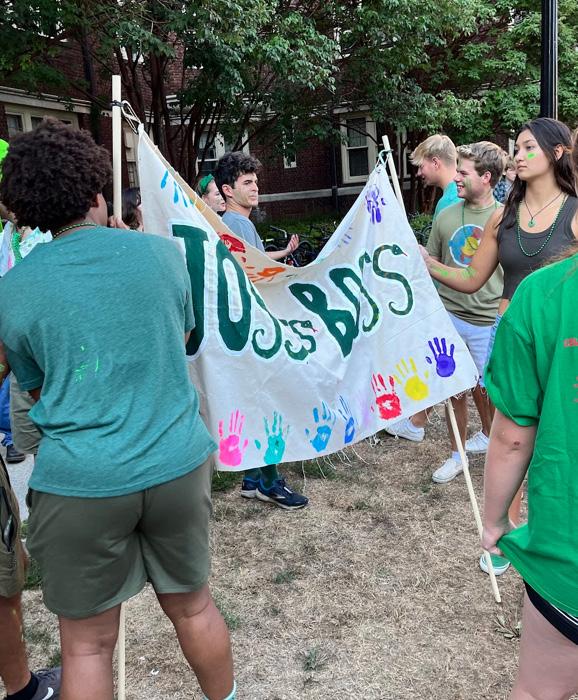
Another memorable event was Con vocation, which took place in the Vassar Chapel. The chapel was a marvelous sight in all its elegance and grandeur. The or gan, the large centerpiece, played majestic melodies throughout the service. One at a time, speakers took to the stage to describe their experiences as former or current Vas sar students. In this picture, the audience is listening intently to the speaker. I had the privilege of sitting relatively close to the front of the stage and captured this oc casion. This event concluded my first new student orientation week at Vassar.
The Gordon Commons ( known better by Vassar students as the Deece) is where you can satisfy all of your gluttonous needs.
Walking up the steps of the Deece marks the beginning of almost every Brewer’s day.
Four magnificent pillars support the roof at the front, giving the building its iconic ap
pearance. Two grand white doors lead into the Deece, making even the tallest of Vassar athletes feel small. Armand Hammer, a hip hop duo from New York City, was coming to Vassar one eventful weekend,and the chalk in front announced the group’s arrival on that cold fall afternoon.
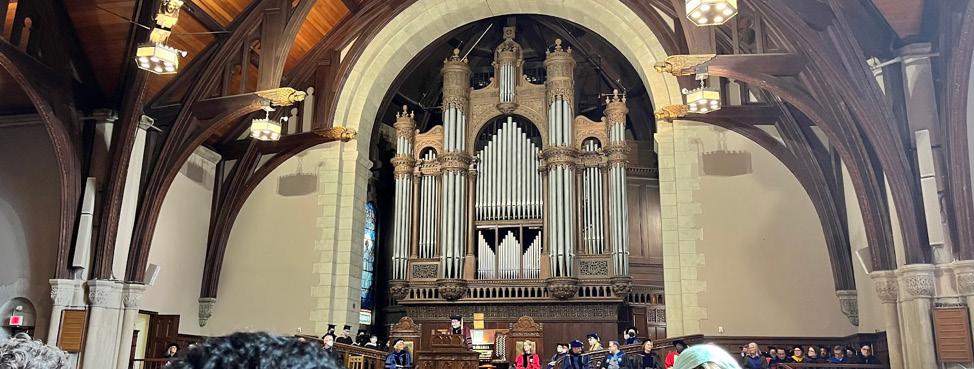
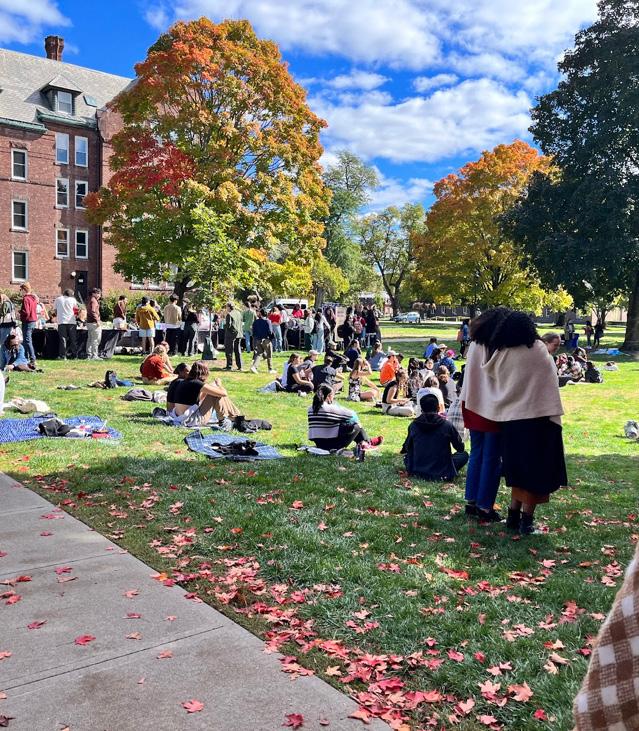
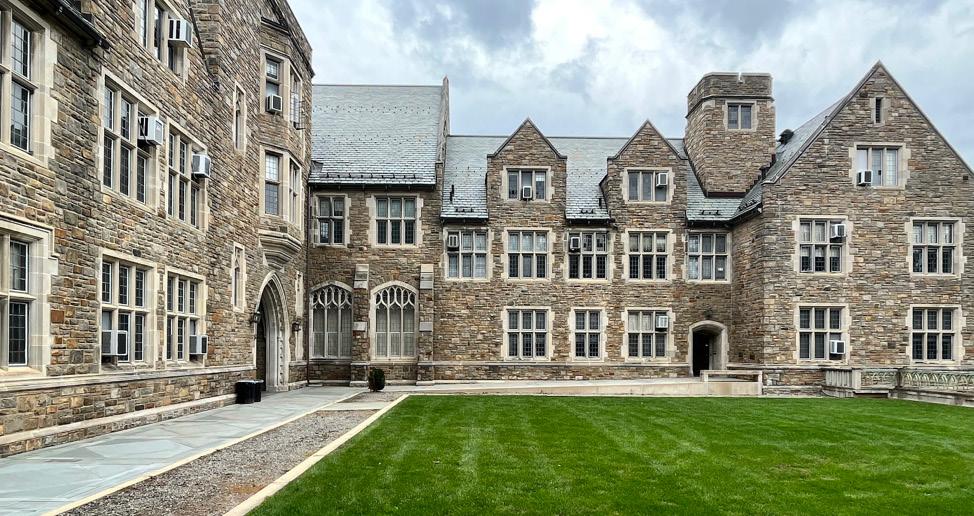
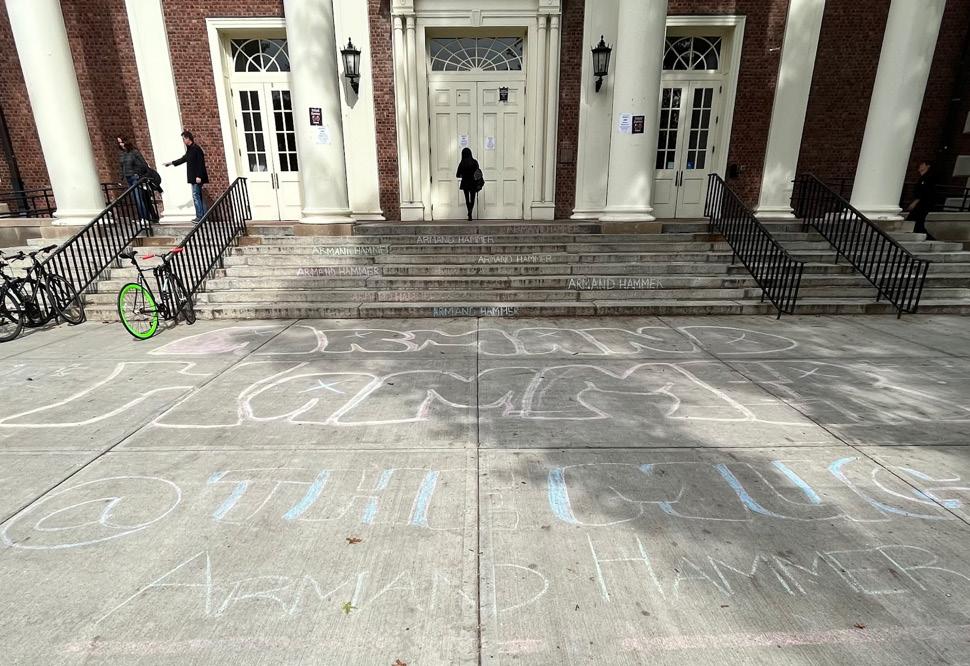
As October Break drew closer, Vassar held the much awaited ALANA Fest. In this picture, students are holding tightly onto one another as they watch musical performances. The vibrant colors and fall en leaves were a sign that autumn had ar rived. Students gathered on this day in the Residential Quad to celebrate various clubs on campus with lighthearted games, foods and conversations. It was wonderful to see students come together for something they can enjoy.
Even though my Vassar experience is just beginning, I’ve already seen so much that makes me fall in love with learning all over again. Only two months have gone by, and I’m looking forward to the many more to come. I’m honored to share my experi ence at Vassar College and hope that my writing cements these memories for stu dents as well.
Fall Break highlight: Students share stories from the week off



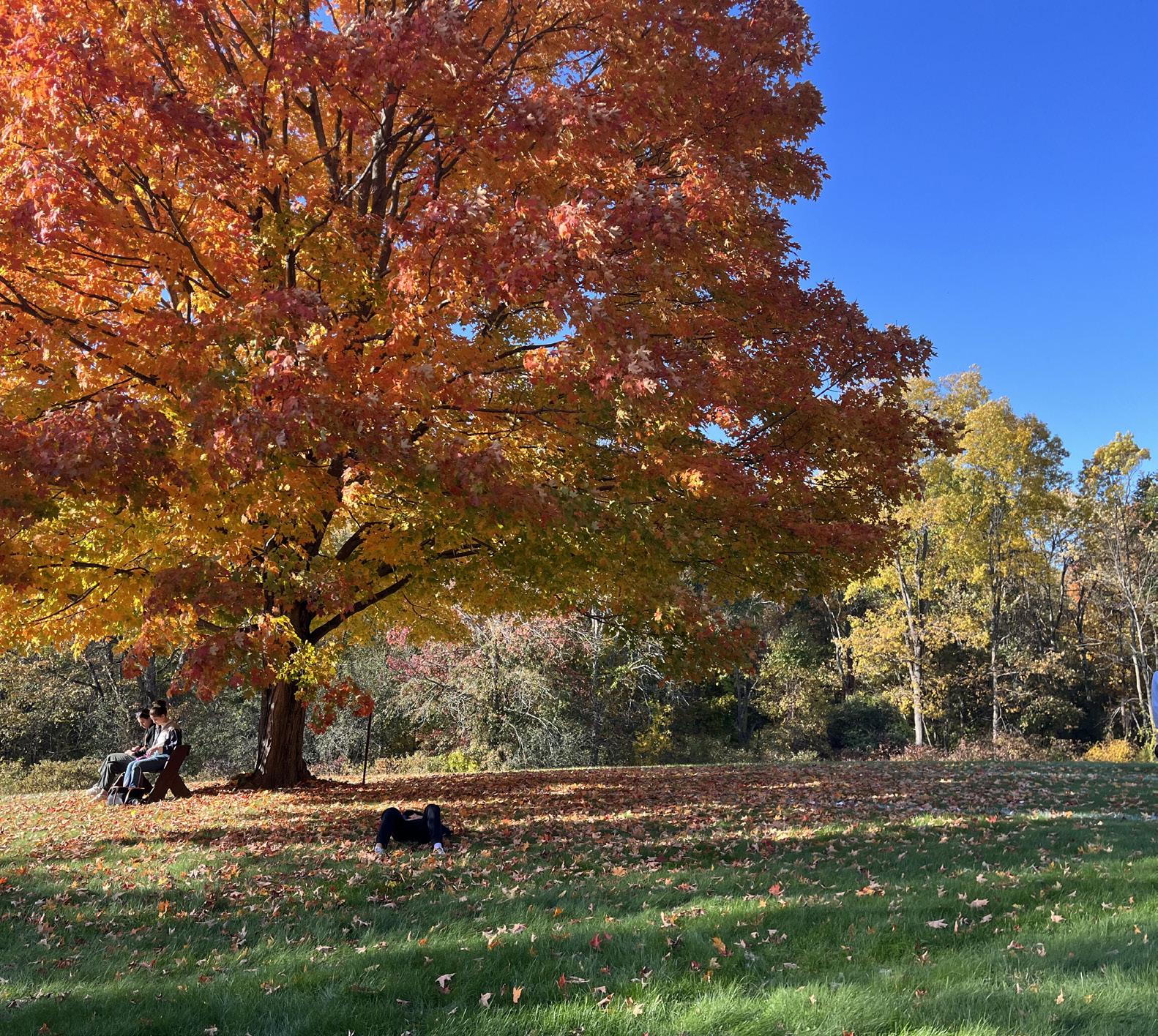
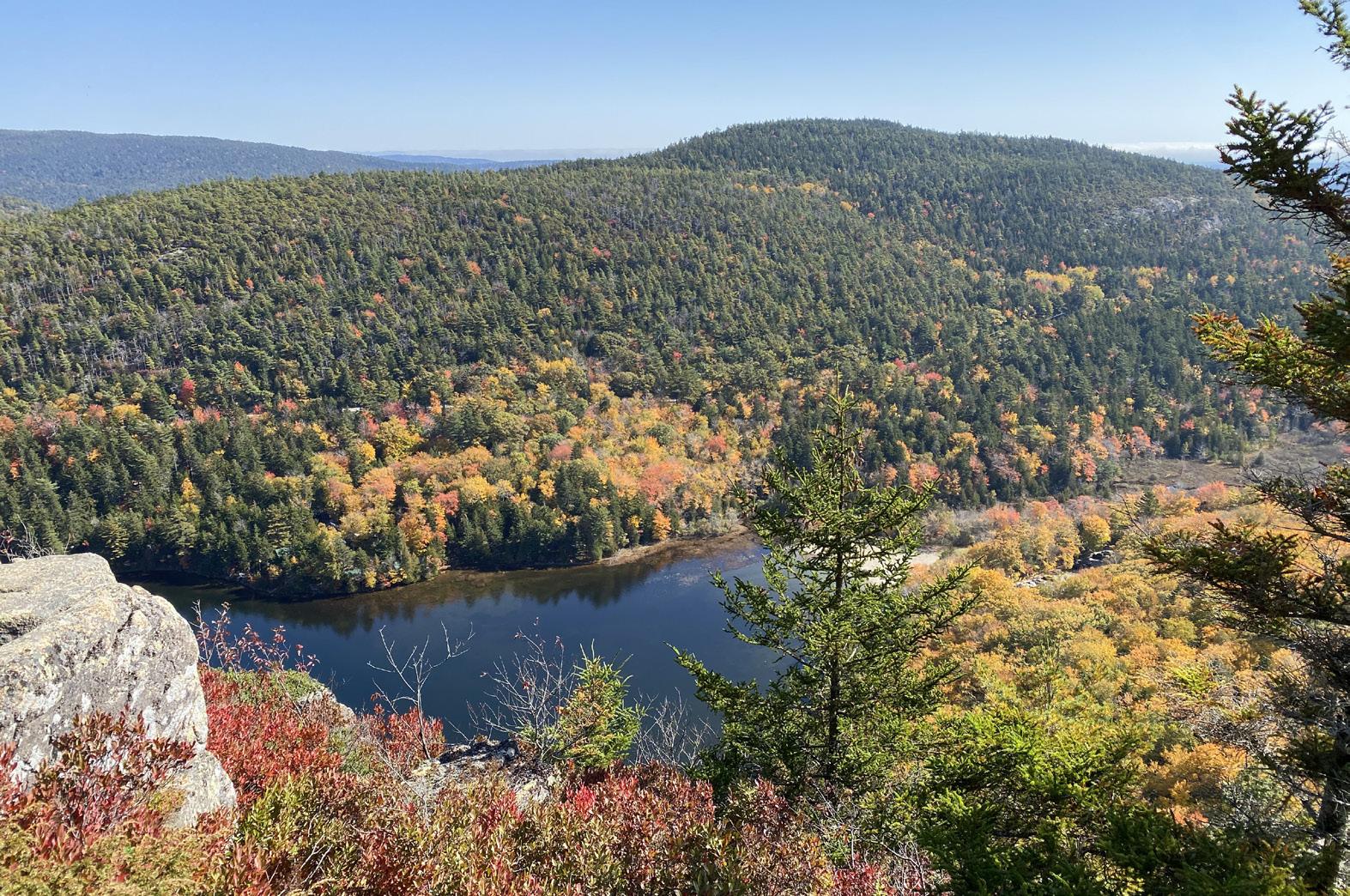
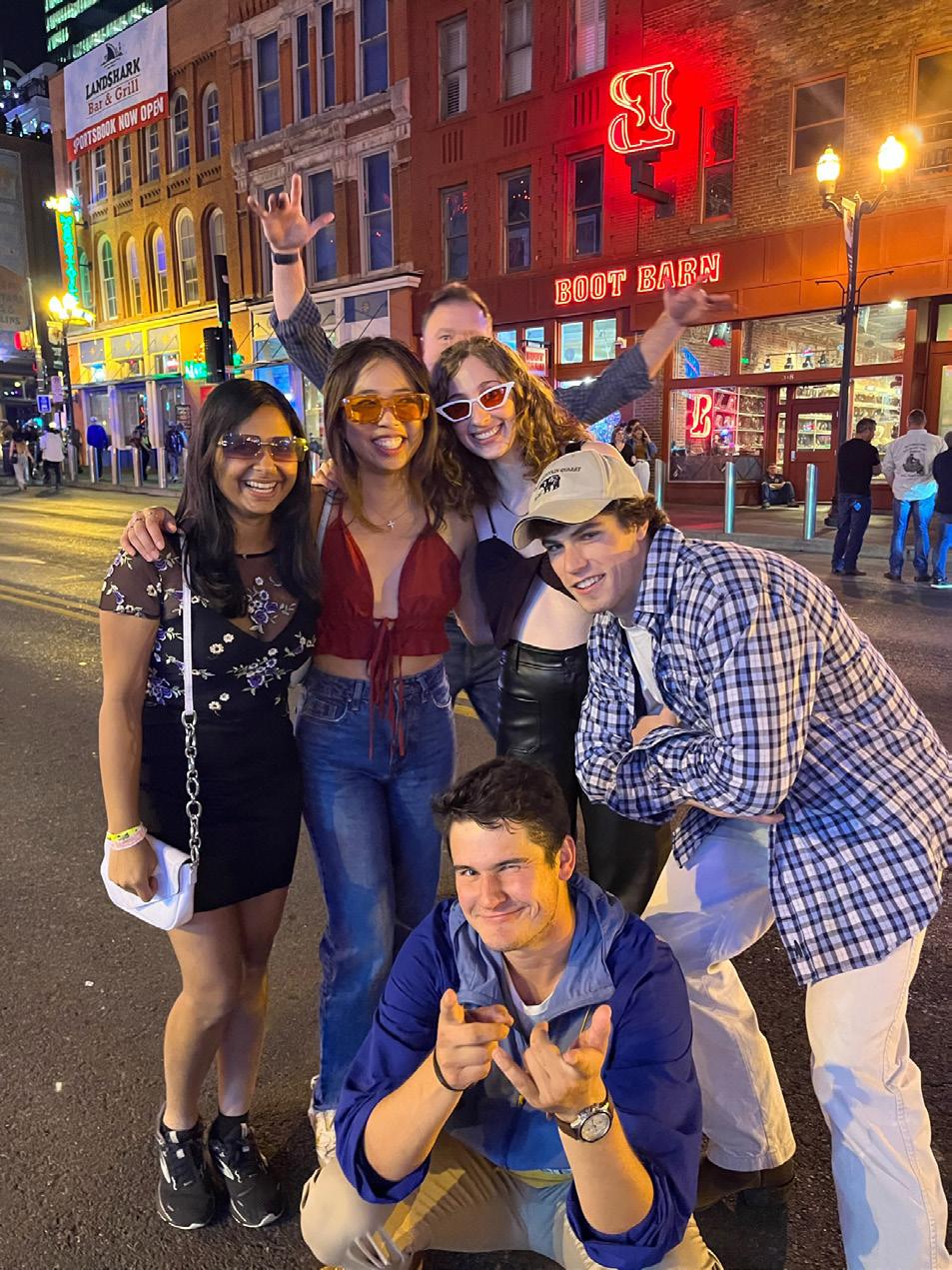
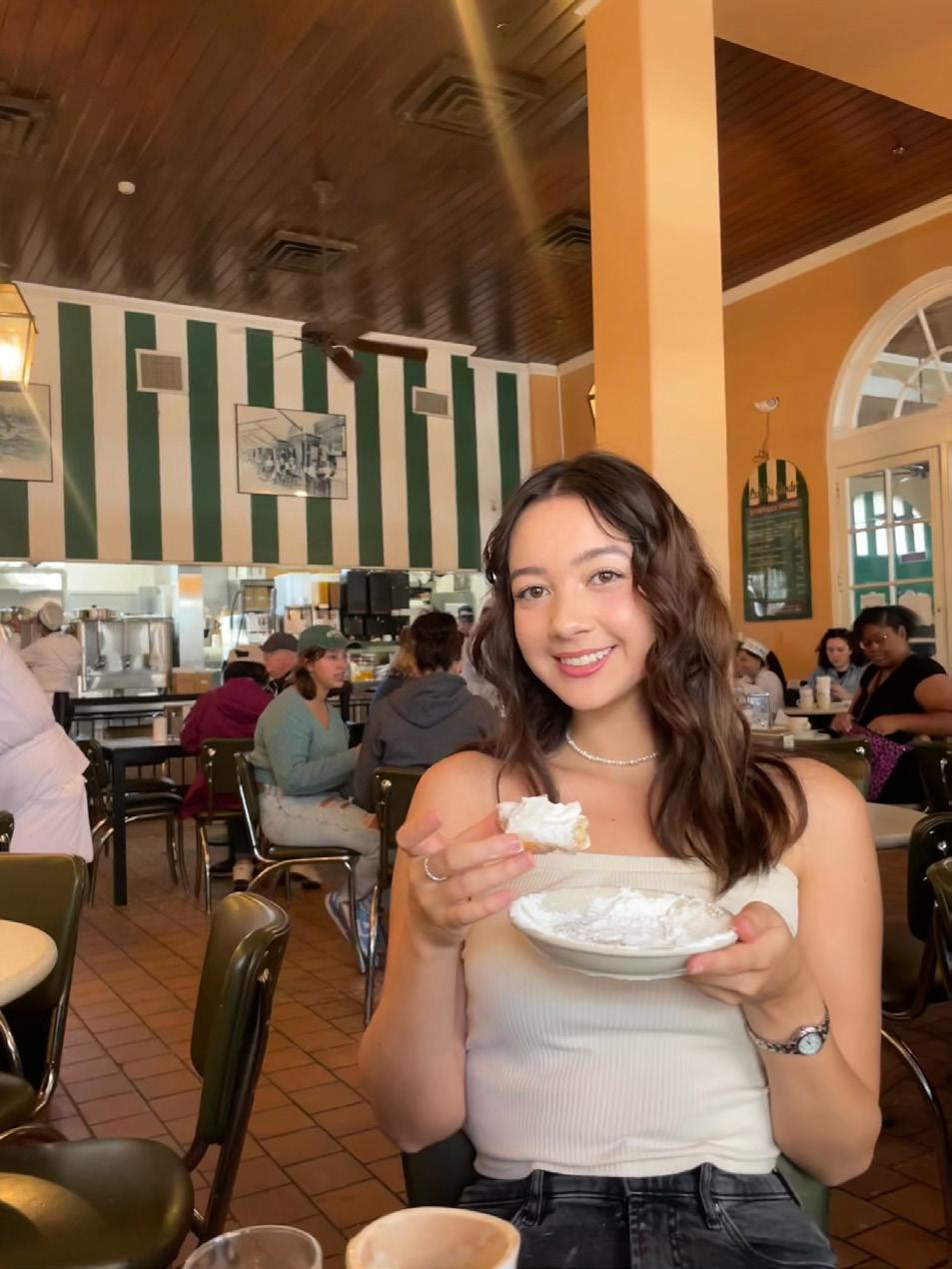
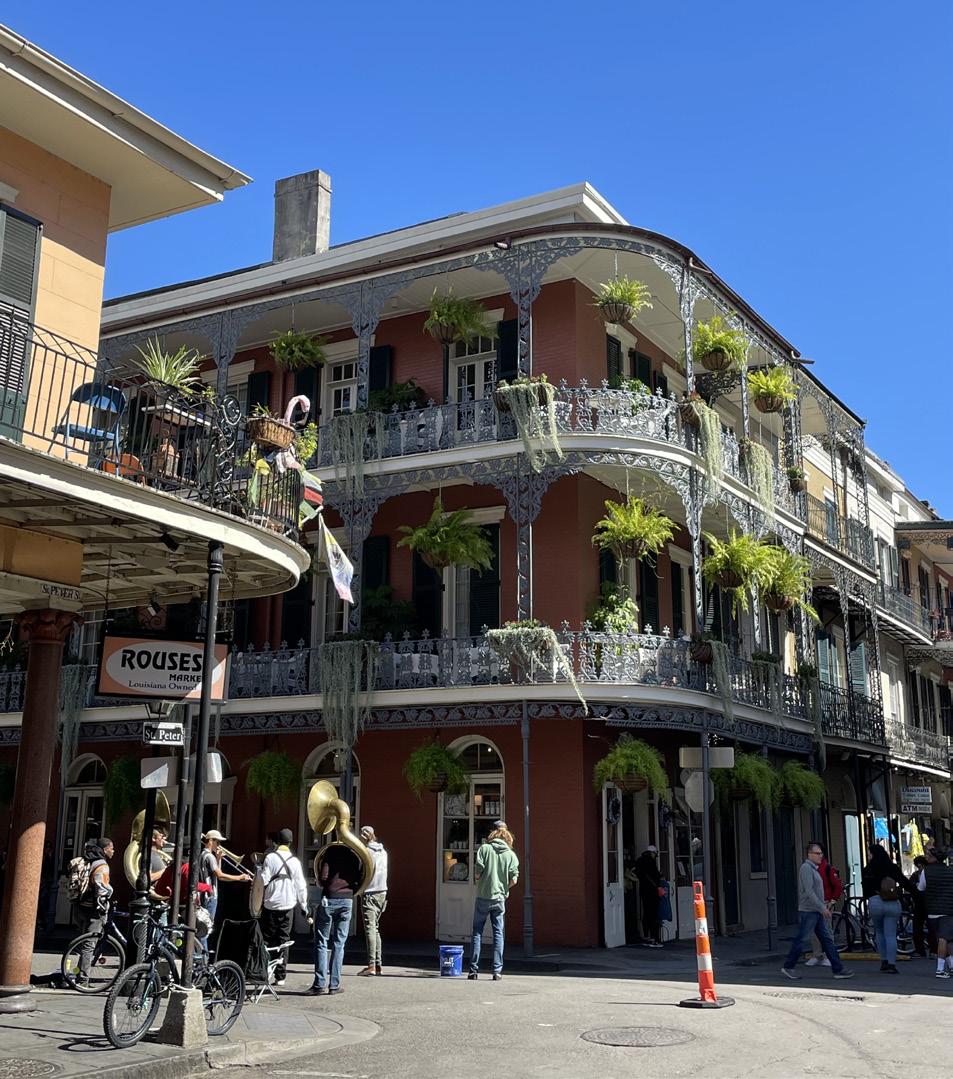
HUMOR
Breaking News
Scariest moment of the season is the realization that you impulse-bought three entire Halloween costumes off of Amazon
How to protect yourself from Vassar's paranormal peculiarities
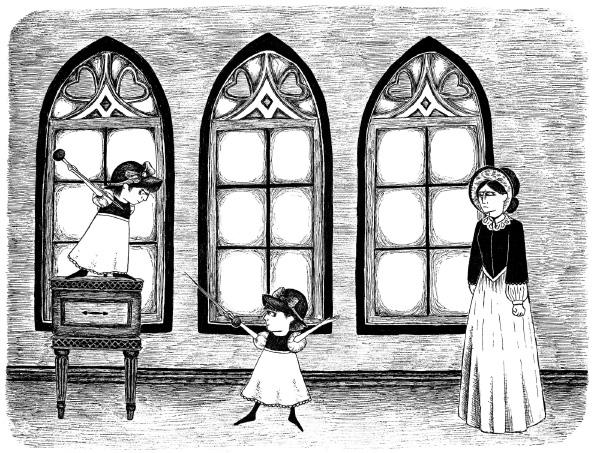 Alyssa Willeford Ghost Expert
Alyssa Willeford Ghost Expert
Do you hear that, fellow Vassarites?
That gentle rattling in the chilly Oc tober wind? Whatever could it be? The mind leaps to the clicking of skeletal foot steps, the chattering of ghoulish teeth, the crumbling of old bricks as things best left unmentioned burst out of their long-forgot ten chambers and let loose in the Raymond basement. Halloween is upon us, after all, and that which would be too frightful to mention the rest of the year now rears its head.
But the clattering you hear is none of those things: No, it is the clacking of my keyboard, the furious pounding of keys as I rush to meet yet another deadline. The scariest thing here is my poor planning, the only true villain being my perennially overcommitted schedule. And yet—though perhaps the macabre and the unexplain able lurk farther away than you had first thought—their presence still menaces our innocent campus. Vassar is famously one of America’s most haunted places, and terrifying stories like those of the Ray mond ripper, Noyes neck-snapper and TH toe-sucker frighten students terribly each Halloween night. How can we best ward
away the clutching fingers of horrifying death? How can we maintain our precious sanity in the face of that which begs belief?
Read on, friends, for the latest advances in stemming the supernatural.
(clearly the entrance to the lair of some undead horror), the woods behind the Ob servatory (no one would hear you scream) and, of course, the Deece whenever it serves its truly satanic zucchini and squash. Just like real estate, paranormal protection is about location, location, location—you want to ensure that any crawling horrors locate someone else before they locate you.
The first precaution one should take on any Halloween is identifying potential sources of danger. When the boundary between our world and the other grows weak, manifestations of madness burst forth at predictable places, and canny students give these a wide berth. Nota bly haunted locations include: the main tenance passage under the Retreat patio
But what if, heaven forbid, your first pre cautions prove insufficient? What if you find yourself forced into a place you know to be one of danger? In that case, you’ll sim ply have to keep your eyes, ears and nostrils peeled to spot any signs of danger before it’s too late. Good signs of impending doom include the screaming of rusted hinges and shambling footsteps in the distance, as well as emails from Moodle bearing news of your midterm grades. But be careful: Some “red herring” sights and sounds are actually commonplace and should not be mistaken for evidence of the supernatural. Strange sobbing in the bathroom, distant, muffled snatches of song and the feeling that you are being silently judged are not indica tions that something wicked haunts you; instead, they simply suggest that you are living near me.
If worst comes to worst, if the ghastly
Poetry Corner
Anna Kozloskighouls come grasping for you, you may need to defend yourself. If you’ve been read ing old horror stories, you might be hoping for a well-oiled Colt revolver or else a classic farmer-style shotgun, but in fact there are far more efficacious methods of defeating the forces of darkness. Antique firepower pales in comparison to wicked, unholy texts; words bear a power against demonic fury that lead does not. In the event that the “Necronomicon” is on back order at the bookstore, simply print out your stu dent loan statements and show them to the fiends from the beyond. In the face of such a sight, even the most hardened ghoul will flee in terror.
So, friends and followers, there you have it. Halloween carries the promise of haunt ings beyond imagining, but with the right know-how, equipment and humor column at hand, you’ll surely be able to preserve yourself over the next frightful days. As a bonus tip, it’s said that the smell of strong alcohol is a potent ward against many terri fying creatures; luckily, in the name of sci ence, an enormous controlled trial of this theory will be taking place on campus this Halloweekend. Or you could abstain. After all, maybe a visit from the toe-sucker might not be so bad…
From the desk of Madi Donat, Humor Editor
“Just like real estate, paranormal protection is about location, location, location—you want to ensure that any crawling horrors locate someone else before they locate you.”
their
Anna Kozloski
ARIES March 21 |



19

20 |
20 GEMINI May 21 | June 20 CANCER June 21 | July 22 LEO July 23 |
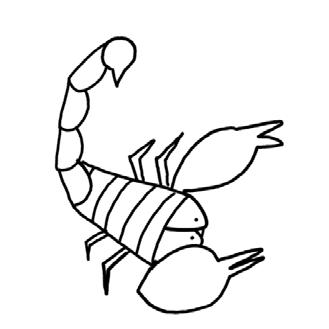

22
23
HUMOR
HORRORSCOPES
Madi Donat Ooky-SpookyWhat scares you the most? Is it the in evitable passage of time? Having to honor plans that you made when you were feel ing more sociable? The idea of not getting a second (third, fourth) tattoo? Do the scary thing. As long as it’s safe. Don’t break the law or consume anything not meant for consumption, please. I cannot be liable.
Do you hear that noise? Listen, closer. I think it’s right behind you. What could it possibly be? Quick, quiet your breathing— we can’t let it hear you. Back away slowly, so slowly. Then, when you think you’re safe, run. Aren’t you glad we practiced this? Now, when you see a deadline approach in the night, you’ll know what to do.
There’s a rattling outside your window, the tapping of branches on glass. Or may be it’s the old bones of the dorms settling into the cool earth. Maybe it’s a bug scut tling across the peeled paint from when the person who lived in your room before you stupidly used duct tape on the walls. Be vigilant. And use painter’s tape. Be smart about your security deposit.
If you get a telephone call from an un known number this spooky season, DON’T ANSWER IT. You do not wanna be Drew Barrymore-d (spoiler alert for a movie that came out before you were born probably). It might be someone who wants your blood— literally. New York Blood Center will not stop calling me. Someone make it stop.
It’s pretty sick to be celebrating Hal loween so close to horror movie staple Sleepy Hollow, NY. Perhaps the beauti ful fall leaves can remind you of a certain horseman who has been unfortunately bereft of an important body part. Quick question: Who decided his head was a pumpkin? Was that in the original? This Halloween, go to the source.
Children can be terrifying creatures because they can sometimes be psychic or see things we can’t. Sometimes I forget how to interact with children because I see so few of them in my day-to-day life. If you see a child this week, ask them if they’ve seen any ghosts lately or commu nicated with the dead. This will go well.
LIBRA September 23 | October 22 SCORPIO October 23 | November 21 SAGITTARIUS November 22 | December 21 CAPRICORN December 22 | January 19 AQUARIUS January 20 | February 18 PISCES February 19 | March 20
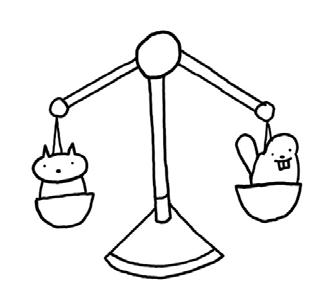
Are you scared of things you shouldn’t be? Irrational fears are your brain’s way of remem bering what was scary in caveman times—like the dark, or small spaces, or teeth (not sure about that one actually to be honest). Next time you catch yourself feeling an irrational fear, remember that you are not a caveman. Unless you are. That would be spooky, actually.
There’s something on your mind. Some thing you can’t get off of it. Something that might eat you up if you don’t control it. It’ll kill you and then lick your face with its rough tongue. Like a cat. Until the skin of your face is gone and you’re just bones. And then when they find you, no one can iden tify you because you have a licked-off face.
Yearning for adventure? Maybe a walk in the woods is in your future. Be careful, though; you never know what, or who, will be lurking around the next corner. A crea ture, a monster… or maybe, just another per son. Just like you and me. Except for in a few key ways (hooks for hands, for example, and wants to murder).
Being an earth sign is all about being the final girl in your own life. When stuff (emotions, knives, etc.) comes at you quick, channel Shelley Duvall or Neve Campbell or Jamie Lee Fucking Curtis and slice and dice with abandon!! You are the queen of the hor ror movie that is your life! You WILL be in the sequel!
Being possessed would suck, but it would be fun to show off your new talents (floating, contortion…). But you don’t need another demonic entity to unlock your true poten tial! All of your gifts are already inside you! Why not learn Latin all by yourself, and speak in tongues and freak out your family on YOUR terms?

Sometimes society is the scariest thing of all. What's your worst fear? Is it the fear of Hell? The belief that you have to grow up to be someone who will never upset your par ents? Your own local government? (From the bottom of my heart, fuck you Glenn Youngkin.) Dismantle that this Hallow een. Don’t say I never did anything for you.
What not to be for Halloween (even though I know you want to!)
One Smart GoblinThis Halloween could prove to be the greatest Halloween of all time, but it's gonna require some collective action from all of us for that to really happen. Here are some of the top costumes I (and everybody else) am saying you definitely shouldn’t wear.
1. Abraham Lincoln
This one’s kind of obvious. EVERYBODY was Abraham Lincoln for Halloween last year. If you think about it, anybody who wasn’t Abraham Lincoln last year will cer tainly be dressed up as Mr. “I’m On the Pen ny” this year. Besides, you don’t want to get in that awkward situation at a party where you run into another Big Abe—but if you do, here's a useful quip to pull out: “Well, I guess one of us has to change into an Andrew John
son costume!” Laughter will ensue. If you do end up dressing up as Abraham Lincoln, having an Andrew Johnson costume under neath your Abe Lincoln costume is essential.
There’s nothing wrong with a quick costume change! Another problem you could run into is that another President Sweet Sixteen at the party could have a far better Lincoln costume than you. In that case, pull out this zinger: “Looks like someone’s directly responsible for the progressive nature of income tax in the U.S.!” Laughter will ensue.
2. Tennis Ball Man


I know that this is the big “do it yourself” costume this year but please, save yourself some time and pick something else. Gluing 89 tennis balls to your body sounds like a fun idea at first, but after ball 72 you’ll be wish ing “Tennis Ball Man: Retribution” weren’t such a box office success. That brings me to
another point: We all saw Tennis Ball Man in theaters—we don’t need to see him again at the Deece!
3. The cat from “The Simpsons”

This seems like a funny idea at first, and it kinda is, but there can be a real sour side to this costume. Having people think you’re the cat from “The Simpsons” is a real hoot, but be prepared to have to answer a lot of ques tions from grouchy Halloweenies, like this one I overheard last year: “Oh, so you’re the cat from ‘The Simpsons’. Why aren’t you the dog from ‘Family Guy’? I like him. This, on the other hand, sucks.” I would be heartbro ken if someone told me that.
4. Hammer Man
This one’s pretty obvious. Dressing up as Tennis Ball Man’s biggest foe is surely a mis take. Be prepared to get tennis balls hurled at
you from short and long distances. It’s quite humorous at first, but after a while it just hurts. Additionally, having to forge Ham mer Man’s Depression Hammer is a taxing endeavor to say the least.

5. The Indy 500
We’ve all seen that viral video online: dude dresses up as the Indianapolis 500 and everybody freaks out. You might think that you want to be the Indianapolis 500 as well, but the best advice I can give you this Hallow een is to not be a copycat. There are so many other major race car events that you could be this Halloween—the Daytona 500 and the Monaco Grand Prix, to name two. That dude’s claimed the Indy 500, and you just gotta accept that.
I hope this will help you make Halloween a critically acclaimed holiday this year!
OPINIONS
Letter to the Editor: The case for a students’ building
We, the President and Vice President of the Vassar Student Association (VSA), oversee a 154-year-old governing organiza tion. “The mission of the Association shall be to serve, represent, promote the inter ests of and improve the welfare of the un dergraduate students of Vassar College,” as reflected in Article I, Section 2 of the VSA Constitution. To accomplish our mission, our government has established and now executes an advocacy agenda of 11 priorities and 43 initiatives based entirely on sur veyed student opinion, organizes and facil itates a range of programming events and finances, and manages over 165 student organizations. We understand deeply that vibrant social life, general student welfare, positive social change and transparent decision-making on our campus hinge upon the contributions of our student or ganizations. In recent years, however, bur geoning shortages of space within Vassar’s buildings have increasingly threatened the permanence and security of our student organizations’ offices, storage closets and capital items. To ensure the long-term vi brancy of student life and curtail the space allocation crisis on campus, we believe ur gent action must be taken by the College to establish or expedite plans to renovate and transform the College Center into a true Students’ Building.
Vassar has an acute shortage of space, which will only worsen without signifi cant corrective action. Every year, the Col lege grows, our government approves five to 10 new student organizations, and the College establishes new programs requir
ing new staff members. Meanwhile, the available office and storage space on cam pus remains fixed in place. Our records indicate that 70 VSA organizations now share 40 spaces across campus. Many of these spaces are cramped and poorly main tained basement closets scattered through out campus buildings, particularly within our variably maintained residential hous es. In previous years, capital items paid for by the VSA—valuing thousands of dollars in total—have gone missing due to the in adequate security of these spaces. To pro vide immediate relief to the situation, the VSA is now in the process of investing an initial $50,000 to refresh these spaces and provide storage lockers to protect capital items. However, we recognize that these steps are ultimately a short-term bandaid for a crisis that is not of our doing; we are now faced by the consequences of the College’s decade-long deprioritization of student spaces. We are currently unable to allocate space to many requesting orga nizations and the problem will only inten sify moving forward. While our current plans will make every effort to provide spaces and resources equitably and strate gically, it remains ever-looming that the spaces provided to student organizations are insufficient, constrain their current operations and limit future growth of stu dent activities.
As the College expands, administrative operations have encroached upon, and now threaten to displace, student organiza tions from the College Center. This semes ter, the College’s need for a new office space
resulted in the revokement of VCTV’s Col lege Center office and provoked discussion of the potential sharing of The Miscellany News office—a small but long-standing al located space dedicated to one of the oldest College newspapers in the country—with multiple publication-based organizations. These organizations require a fixed amount of space for production, editing, filming and broadcasting, and the suggestion that they may soon need to share space not only threatens their operations but also signals a fundamental failure by the College to invest in the student spaces necessary for vibrant social life, general student welfare, positive social change and transparent de cision-making on our campus. While the VSA has worked and continues to work behind the scenes to dampen the blow, we have no tangible authority over the revo cation of spaces within the College Center. We, instead, are mere messengers of the College’s space allocation decisions; serv ing in this capacity has and will continue to jeopardize our commitment to protect and defend the interests of our peers.
While we recognize and appreciate that some effort has been made by the College to ease the impact of these immediate changes in space allocation, and are partic ularly grateful to our VSA Advisor in her efforts to investigate all possible alternative solutions, we remain gravely concerned that the College’s priorities and building projects do not confront the shortage of student activity space on campus in either the short- or long-term future. While the College’s construction of a hotel and con
ference center may—as some note—provide tangential benefit to the wider Vassar com munity, there remains no building project or College priority that dramatically im proves or directly addresses the breadth of our residential college experience.
We recognize that the shortage of space on campus impacts administrators and student organizations alike. However, the VSA’s lack of tangible authority over the allocation of space ensures that admin istrators may both offset the impact of the crisis onto student organizations and subsequently delay the administration’s personal need for physical solutions to the problem. We urge the College to reaffirm its commitment to the promotion of a well-rounded student experience, particu larly as it relates to our student activities, beyond the general applause to student or ganization programming and through real investment in student space. The College needs to provide students with the appro priate amount of quality space and author ity over those spaces as is necessary for us to continue providing the robust activities and opportunities our peers need.
The time for a Students’ Building was yesterday; the next-best time is today.
This opinion editorial is the shared private stance of the VSA President and Vice Presi dent, and does not express the official opinion of the Vassar Student Association, its mem bership or any of its bodies. Any references to our position titles in this editorial are made solely for the purpose of identification, not to suggest the VSA’s endorsement.
Protests in Iran signal push for women's rights
Tara Lohani Guest ColumnistOn Sept. 16, 2022, a 22-year-old Iranian woman died in police custody. Mahsa Amini’s name has been in headlines world wide as the past few weeks have seen an ti-government protests breaking out in the capital of Tehran, sparking a major show of opposition against the oppressive Islamic Republic. Amini’s arrest by the morality po lice—the guidance patrol that enforces strict dress codes for women—has led to wide spread anger targeted at the lack of women’s rights in Iran.

Dissent has always been an intrinsic part of Iranian history. Today's indignation is reminiscent of the 1979 revolution, the 2009 protests over Iranian presidential elections and the 2019 indignation over rising fuel prices. However, for the very first time, the movement’s principal source of discontent is neither economic nor political. Instead, op position to the government finds its roots in the collective acknowledgement of women as the primary victims of years of repression— reflected through the adoption of “Women, Life, Freedom” as the movement's resound ing slogan—marking a turning point for the future of Iran and its fight for equality. Wall Street Journal indicates how oil workers have gone on strike, clerical forces are calling for the end of the Republic and businesses have closed down in defiance. Different factions of society have united on the objective of justice for women. The women themselves, according to BBC, form the very forefront of the movement, openly cutting their hair on the streets of Saqque, burning their hijabs at rallies in Ahvaz and releasing brazen videos condemning the Islamic republic. The dis
content we see today is a culmination of de cades of mistreatment—of compulsory veil ing, of the lowering of the minimum age of marriage, of denied access to education—and brutal, resounding punishment if or when laws are not followed, per IranWire and Ra dio Free Europe. Present-day protests clearly show a shift in the values of Iranian society, one that will have resonating effects for years to come.
Significantly, those taking such extreme actions and openly confronting the govern ment are members of the younger genera tion. Protests within Iran are composed pri marily of young Iranians who have grown up with the advent of social media and, subse quently, have formed ideals outside of those perpetuated by the Republic. As a result, the movement we see today is, in some ways, largely self-proclaimed—it does not have a leader and it does not have a political group or figure that it adheres to. Rather, it is self-or ganized but still capable of taking cohesive steps to act as a force of change. The values and objectives of this younger generation fundamentally contrast with those of the Republic—their ideologies are detached from those that define oppressive Iranian society. Additional attempts made to censor the in ternet and prevent access to the outside world have been largely unsuccessful, as according to The New York Times, videos are still circu lating on social media showing young high school girls “tearing up” photos of supreme leader Ayatollah Ali Khamenei and defiantly walking outside without hijabs.
This growing power is perceived to be a threat by the Republic. According to The New Yorker, on Sept. 30, 16-year-old blogger Sa rina Esmailzadeh was beaten to death with a baton at a rally in Karaj after having previ
ously posted a YouTube video titled “I always think, why did I have to be born in Iran?” 17-year-old Nika Shakarami was chased by security forces—10 days later, her family was called to “retrieve her body from a detention center in Tehran.” Government claims that both girls died by suicide have been met with outrage, as the two have now become “new” faces of the movement alongside Mahsa Amini. By punishing dissenters in order to maintain a repressive regime, the Republic has only contributed to the citizens’ need to attain reform. Rather than being silenced, the voices of the people have only grown louder.
Notably, these acts of disobedience are not constrained solely to Iran. A major rea son why the protests can be regarded as im perative in consolidating reform is due to the fact that the plight of Iranian women and the violent treatment of Mahsa Amini, among countless others, has reached global recognition. Reuters observes how protests have gradually spread to Western countries, with relentless participation from youth.
From signs stating that “Hijab is a choice not a force” in Greece to rallies in Rome, people worldwide feel the need to revolt. On Oct. 22, nearly 80,000 people joined a march in the German capital, Berlin, to showcase their solidarity with protestors in Iran, proving to be the largest campaign against the Islamic Republic held abroad. It’s clear that the re sistance is much broader in scope, with its growing influence indicative of its dynamic nature.
For more than 100 years, Iranians have been fighting to attain basic human rights— for freedom and for equality. Ever since the advent of the Islamic Republic, all it has faced is resistance from its people. It may be that present-day protests will finally allow Irani ans to forge the pathway to reform. Young people spearheaded this movement, defined by unity across all classes, religions and eth nicities—and the feelings of anger and griev ance do not seem as though they will ever fade, as people all over the world take to the streets and demand immediate action and change.
Athletics Day of Giving hauls in nearly half a million dollars
Director of Athletics Michelle Walsh to stu dent athletes.
Chris and Janet English ’82 later matched the Bradleys’ donation after the campaign reached its donor goal after less than eight hours.
Achieving their donor goals also earned each team a $1,000 donation made in mem ory of Linda Morgan ’73, a former Vassar women’s basketball player. The generous donation was made by Morgan’s husband, Michael Karam.
After 27 hours of impressive generosity, Walsh expressed gratitude for the cam paign’s success.
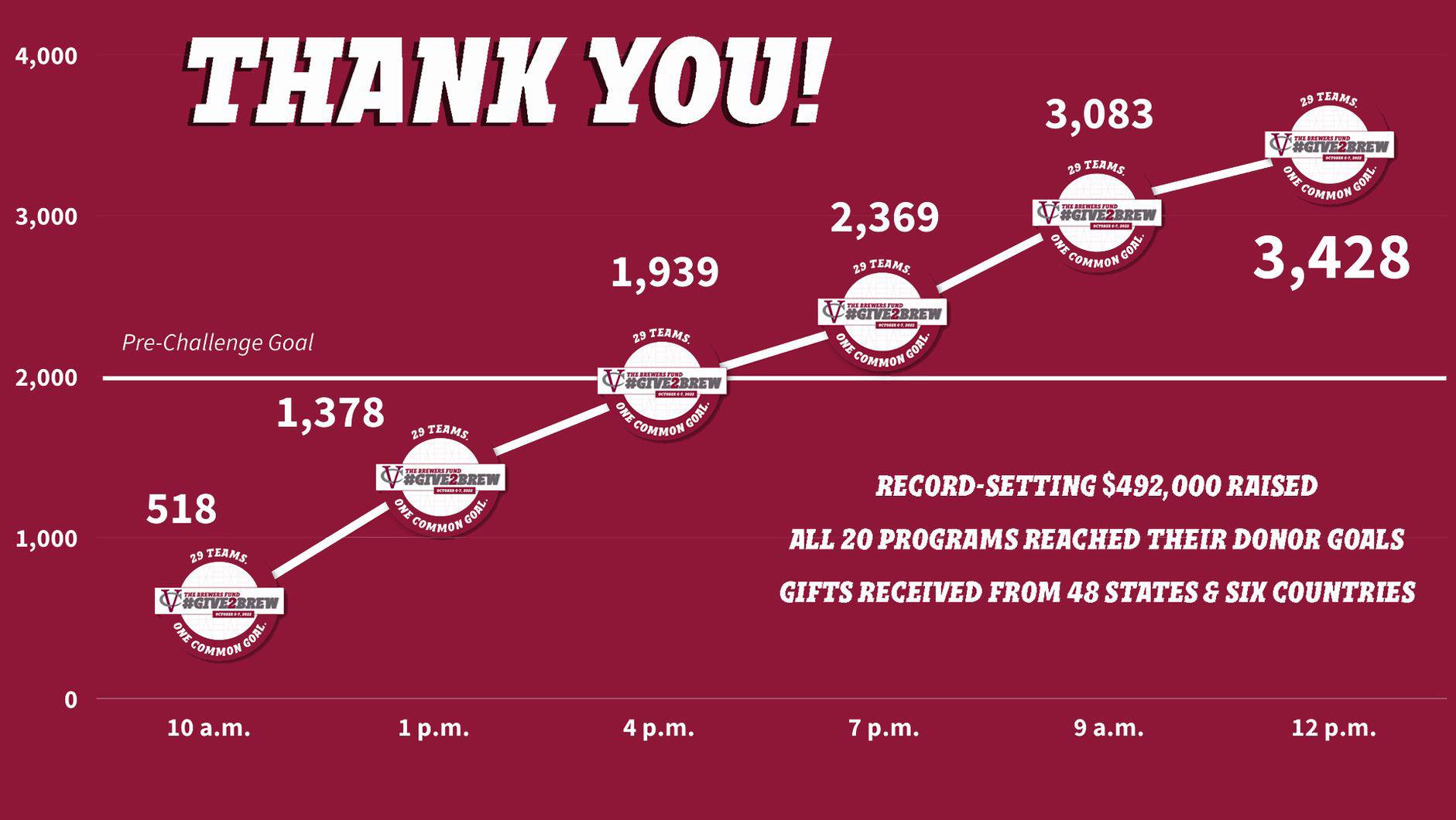
“The #Give2Brew campaign was a tre mendous success, not only in terms of dollars raised, but also the incredibly posi tive outreach from our friends, family and alumni throughout the course of the 27 hours,” Walsh commented in a statement. “Thank you to all of our dedicated support ers who demonstrated their unwavering Brewer pride."
13 teams met their donation goal, with many raising $5,000 more than their goal.
Of the 20 programs listed for donations on the Day of Giving homepage, all succeeded in raising program-impacting, if not pro gram-changing money, even if some fell just short of their set monetary goal.
Teams now get to reap the benefits of their donors’ generosity. The over 3,000 donations
make it possible for Vassar student-athletes to represent the College around the country and world, with many individual team goals centering around trips to places like Florida, California, Puerto Rico, Costa Rica and the Netherlands.
Other teams will also enjoy upgrades to
their facilities and day-to-day experiences. A new infield tarp will make weather de lays less difficult for baseball and new video systems for squash and women’s soccer will make games more accessible to athletes and their supporters. And a whole lot of new equipment will make for better practices,
regardless of which of Vassar’s athletic facili ties teams call home.
After two years of operating within the constraints of a pandemic, the nearly half a million dollars raised will go a long way for teams and the Athletic Department as a whole.
The Denver Broncos have been a fascinatingly terrible NFL team

There’s a scene in the “Simpsons” epi sode “You Only Move Twice” in which Homer’s incredibly rich ex-boss buys him the Denver Broncos, and Homer is imme diately disappointed because they’re not the Dallas Cowboys. Although this clip is from 1996 (actually a pretty good year for the Broncos), it paints a vivid picture of what being gifted the Denver Broncos would feel like today. It would suck. I cer tainly would not want to be gifted the Den ver Broncos.
From the beginning of the presea son, the Denver Broncos have been a team NFL fans have kept an eye on. This can be traced primarily to their offseason acquisi tion of Super Bowl Champion and former Seattle Seahawks Quarterback Russell Wilson. The Broncos sent away multiple first-round picks and three players to Seat tle and have agreed to pay Wilson enough to make him the second highest paid quar terback in the league, per NBC sports. Peo ple have been paying attention to Wilson this offseason. He had his own Subway Sub from February to August, according to CBS sports, and footage from Broncos’ Twitter of Wilson awkwardly giving takes on the line “Broncos Country: Let’s Ride” went viral over the offseason after being quoted by fans and college quarterbacks alike, as featured on the ESPN sports Ins tagram.
There’s been one problem though with all of this extensive media attention, though. The Broncos’ offseason acquisi tion of Wilson has been a disappointment in every way possible. Despite being an MVP-caliber talent for much of his career, Wilson has had some of his worst career numbers through six games this season. He’s been inaccurate, and his passing yards per game have suffered. The team sits at 2-4 after six weeks.
These failings can be explained largely
by Wilson’s new playstyle with the Bron cos. As described by Sports Illustrated, Wilson has always been a quarterback that moves. When Wilson moves around a lot, he creates openings in the defense where he can throw to receivers. Another thing to know about Wilson is that he is relatively short for an NFL QB so when he doesn’t move in the pocket, something he has done a lot this season, it can be hard for him to see open receivers behind his line men. This is particularly a problem in the middle of the field. Wilson’s lack of vision has significantly contributed to an incred ibly ineffective Broncos offense, especially in front of larger TV audiences.
The Broncos have played the majority of their games this season in nationally televised spots either on Sunday, Monday or Thursday night football. Every team in the NFL plays at least one primetime football game while “Marquee match-ups” (games with teams projected to play well and draw in many viewers) put notable teams in even more primetime games, as described by NFL operations. The Broncos have played four primetime games in six weeks. It is clear the NFL schedule mak ers believed Denver would be an exciting, competent football team. Denver’s stats have proven them very wrong.
As someone who watches quite a lot of primetime football but who is not a Denver Broncos fan, I have begrudgingly watched quite a bit of Broncos football. My viewing experience has ping-ponged between being disappointed by the lack of offensive scor ing and appreciating the close score, but ultimately ends with being fascinated by how collectively banal these games have been.
The Broncos’ primetime scores have been incredibly uncommon, including low scores like a tight 11-10 win against San Francisco and a 17-16 win over Hous ton, but the magnum opus of Broncos primetime football was a 12-9 OT loss to the Colts at home, in which neither team
scored a touchdown. This game was so un exciting that fans were leaving the stadium before the overtime period even began, as archived by Sports Illustrated. The game ended fittingly: on a failed Broncos touch down attempt. This game was also notable because Wilson’s post-game conference af ter the loss ended with him triumphantly saying “Broncos Country, let’s ride,” before leaving the room, Sports Illustrated report ed.
If there’s one positive in this year's Den ver team, it is that its defense has been very effective. The team is holding opponents to an average of 16.5 points per game, which is good for fourth in the league through six weeks.
This is certainly a highlight for an un derwhelming Broncos team, but it’s likely things for the Broncos will get worse be fore they get better. I didn’t even mention Denver’s new Head Coach Nathaniel Hack ett who has faced scrutiny for his late game calls, like opting for an incredibly difficult 64-yard field goal in a week one loss and taking pass attempts instead of running the ball in the red zone in week five, perU SA Today.
After a sobering press conference fol lowing another loss in week six, Wilson did not end with “Broncos Country, let’s ride.” It appears the Broncos are currently not riding, and it seems quite uncertain when the Broncos will ride again.
Codes"
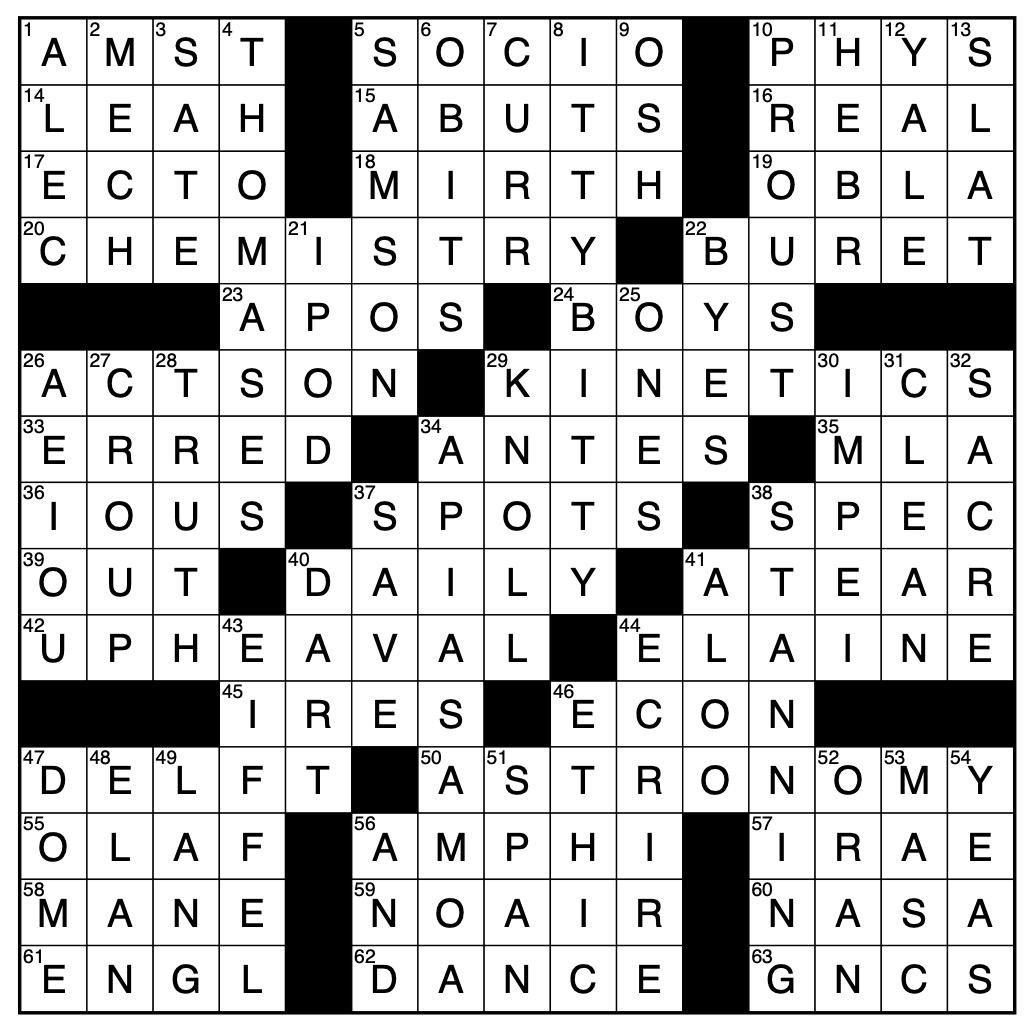 By Harrison Walker
By Harrison Walker
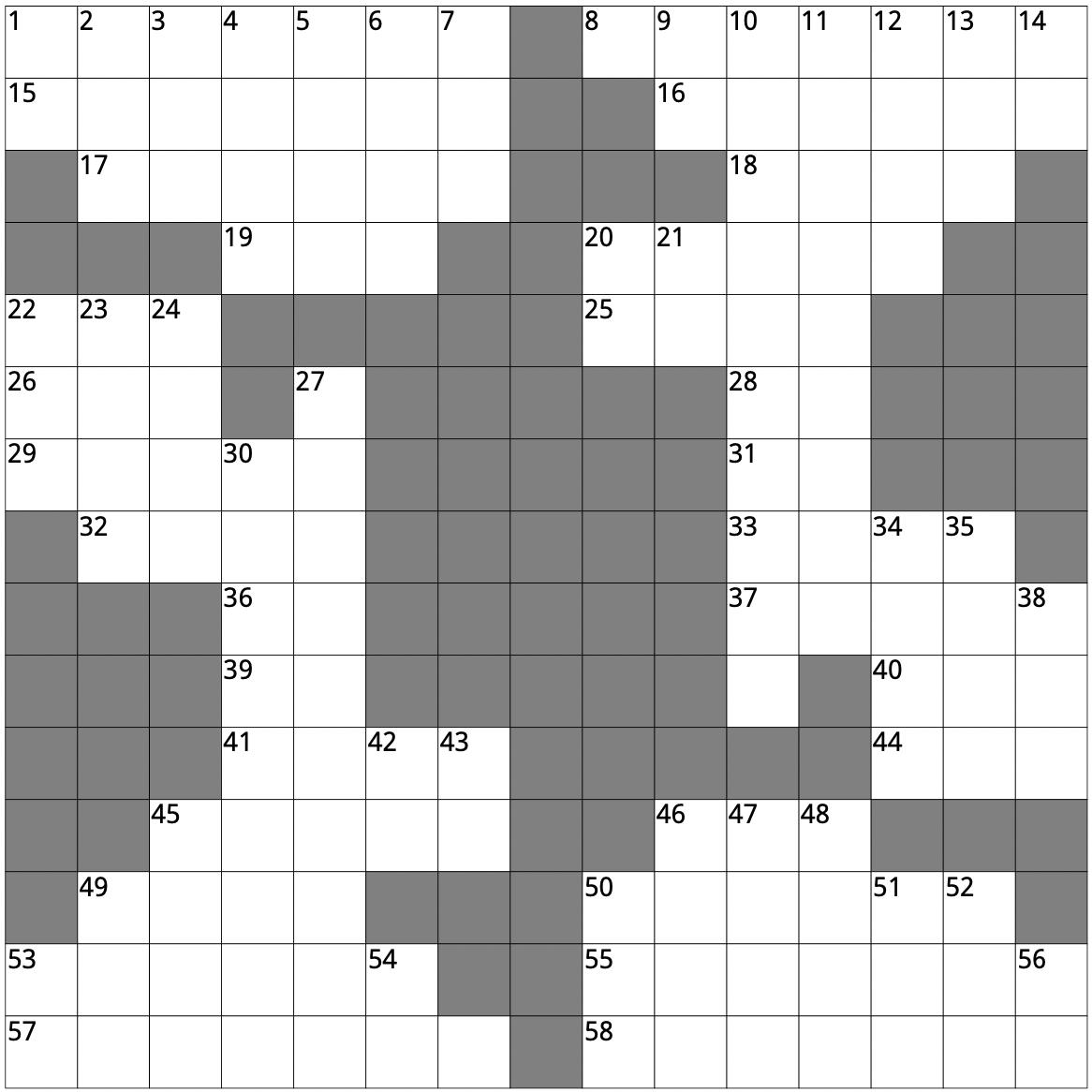
 By Claire Bennett
By Claire Bennett
